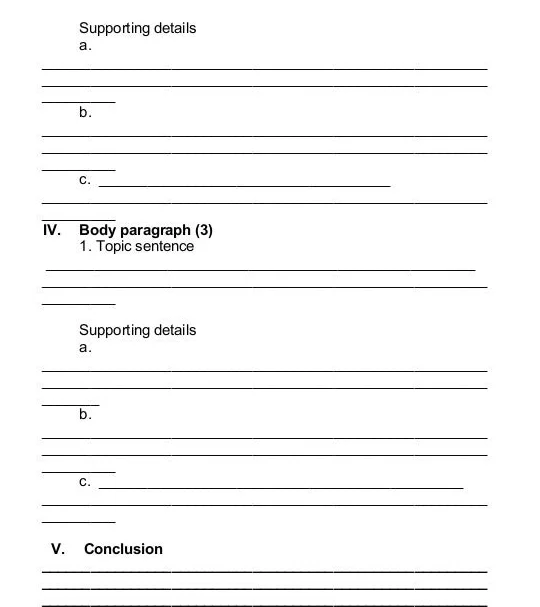How to Write a Diagnostic Essay in 5 Steps & Example
22 December 2023
last updated

Importance of Writing a Diagnostic Essay
Today, students write diagnostic essays as a way of evaluating their writing skills, identifying areas of improvement, and helping instructors to understand their knowledge levels. In this case, one primary reason for writing a diagnostic essay is to improve the student’s writing abilities. After analyzing diagnostic essays, instructors can identify common challenges, mistakes, or areas where students need additional support, and this process enables them to become more self-aware and educated about their writing strengths and weaknesses. As a result, writing diagnostic essays suggests using learning tools for both instructors and students while seeking a possible improvement in specific areas highlighted by a diagnostic assessment.
What Is a Diagnostic Essay and Its Definition
According to its definition, a diagnostic essay is a written assignment that students need to complete to evaluate their writing skills, strengths, and weaknesses. The primary purpose of writing a diagnostic essay is to allow instructors to get a better understanding of the student’s writing skills, including grammar, flow of ideas, syntax, organization, and clarity of arguments. In this case, students get essay topics that require them to express their thoughts, analyze a concept, or argue a particular point of view. After completing a diagnostic essay, it creates a starting point from which both instructors and students can work toward enhancing writing proficiency and other aspects that require improvement. One key characteristic of a diagnostic essay is that it is often completed within a limited timeframe. Compared to other types of papers , a diagnostic essay should not be graded for its content or depth of analysis.

How to Format a Diagnostic Essay
Formatting a diagnostic essay is essential to share ideas clearly. While specific formatting requirements may vary depending on the instructor or institution, general guidelines for structuring and formatting a diagnostic essay are:
- Introduction (Approximately 10-15% of a diagnostic essay): Start with a compelling introduction that provides context to the reader. Clearly state the purpose of writing a diagnostic essay and introduce the topic or prompt. End the introduction with a thesis statement that previews the main points of your paper.
- Body Paragraphs (Approximately 70-80%): Organize your thoughts logically into paragraphs. Each paragraph should focus on a single main idea, starting with a topic sentence that introduces the main point, followed by supporting details or examples. Ensure smooth transitions using bridge sentences between paragraphs to maintain coherence.
- Conclusion (Approximately 10%): Provide a summary of the key points of your diagnostic essay and restate the thesis in a new way. Avoid introducing new information in the conclusion. Instead, leave the reader with a thought-provoking statement or a call to action related to the topic.
- Language and Style: Always use clear and concise words. Check for grammar, spelling, and punctuation errors. Ensure that your paper follows an academic tone expected in your course. Follow any specific style guide, such as MLA 9, APA 7, Harvard, and Chicago/Turabian, or other formatting instructions provided by your instructor.
- Font and Margins: Use a legible font, such as Times New Roman or Arial, with a standard size (e.g., 12-point). Set standard one-inch margins on all sides.
- Spacing: Double-space a diagnostic essay, including the title and references (if applicable). This spacing makes your paper easier to read.
- Title Page (If Required): Some instructors may ask to provide the title page with specific information, such as your name, course name, date, and diagnostic essay title. Follow any specific instructions regarding the inclusion of a title page.
Always check the assignment prompt or your instructor’s guidelines for any specific formatting requirements. However, following the guidelines above ensures a professional and well-organized diagnostic essay that effectively communicates your writing skills to your instructor.
Top 20 Common Aspects to Consider When Writing a Diagnostic Essay
10 strengths of writing skills.
- Clarity: Strong writing skills enable students to communicate ideas clearly and concisely, ensuring that readers can easily understand the intended message of an essay.
- Organization: Skilled Students can effectively organize information, present it in a logical order , and enhance the overall flow of the content.
- Creativity: Good writing often involves creativity, allowing students to use language in unique and engaging ways to capture the reader’s attention and make the content more interesting.
- Critical Thinking: Learners must evaluate arguments, consider different perspectives, and present well-reasoned conclusions.
- Research Skills: Good diagnostic essays often involve research to gather accurate and relevant information. Learners with strong research skills can support their arguments with credible sources .
- Adaptability: Skilled students can adapt their writing style to different audiences and purposes. Whether it is a formal report, persuasive essay, or creative piece, they can adjust their tone and approach accordingly.
- Grammar and Punctuation: Proficient students follow all grammar and punctuation rules, ensuring that their diagnostic essay is grammatically correct and easy to read.
- Vocabulary: A rich and varied vocabulary allows learners to express ideas more precisely and vividly. Strong writers can choose the most fitting words to convey their thoughts effectively.
- Editing and Revision: Writing skills include the ability to review and revise one’s work. This process involves self-editing for clarity, coherence, and overall improvement of a diagnostic essay.
- Persuasion: Whether in business, academia, or everyday communication, persuasive writing is a valuable skill. Strong learners can construct compelling arguments and influence the opinions of their readers.
10 Weaknesses of Writing Skills
- Grammar and Spelling Errors: Weaknesses in grammar and spelling can undermine the credibility of a diagnostic essay and distract readers from the content.
- Lack of Clarity: Poorly organized or unclear writing will confuse readers since they will not understand the main ideas.
- Redundancy: Repetitive use of words, phrases, or ideas can weaken the quality of a diagnostic essay and make it less engaging.
- Weak Vocabulary: Limited word choice can result in dull and uninteresting writing. A weak vocabulary may also lead to the imprecise expression of ideas.
- I nconsistency: Learners may have a weakness in maintaining a consistent tone, style, or perspective throughout essays.
- Difficulty in Synthesizing Information: Some individuals may struggle to synthesize information from various sources, leading to a potential bias in their essays due to generalization .
- Overuse of Jargon: Overloading a piece with jargon can confuse readers who are not familiar with the terminology of an essay.
- Lack of Originality: Students with weak skills may struggle to bring a fresh perspective to their work, resulting in unoriginal content.
- Ineffective Research Skills: Insufficient or inaccurate research can weaken the foundation of an argument, reducing the overall strength of a diagnostic essay.
- Poor Time Management: Procrastination or inadequate time management can result in writing in a rush, impacting the paper’s quality.
Diagnostic Essay Topics
- The Impact of Technology on Society: A Diagnostic Analysis
- Discussing the Pros and Cons of Online Education in the Modern World
- Impacts of Artificial Intelligence on Employment: A Diagnostic Study
- The Role of Education in Fostering Environmental Awareness
- Analyzing the Effects of Fast-Food Consumption on Public Health
- The Challenges and Benefits of Remote Work in Today’s Economy
- Examining the Role of Gender Stereotypes in Media Representation
- Exploring the Relationship Between Exercise and Mental Well-Being
- The Impact of Globalization on Local Economies: A Diagnostic Study
- Analyzing the Role of Critical Thinking in Problem-Solving in the 21st Century
- The Influence of Video Games on Youth Behavior: A Diagnostic Examination
- Exploring the Ethical Implications of Genetic Engineering
- Analyzing the Role of Art and Creativity in Problem-Solving
- Challenges of Balancing Work and Personal Life in a Digital Age
- The Influence of Political Correctness on Freedom of Speech
- Exploring the Impact of Immigration Policies on National Identity
- The Role of Education in Addressing Racial Inequality
- Effects of Globalization on Indigenous Cultures
- Analyzing the Influence of Fashion Trends on Body Image Perceptions
- The Role of Personal Values in Ethical Decision-Making
How to Write a Perfect Diagnostic Essay in 5 Steps
Writing a good diagnostic essay involves evaluating your writing skills and presenting a paper showing your abilities at the beginning of a course or program. In particular, five easy steps to help you to start your paper include:
Step 1: Understanding a Diagnostic Prompt
Start by carefully reading and understanding the prompt or topic provided by your instructor. Identify the main elements and requirements of the assignment. Pay attention to any specific instructions regarding the focus, length, or format of a diagnostic essay.
Step 2: Brainstorming and Planning
Take some time to brainstorm ideas related to the prompt. Consider the main points you want to address and how you can organize them logically. Create a brief outline to structure your diagnostic essay, including an introduction, body paragraphs, and a conclusion.
Step 3: Writing an Introduction and Thesis Statement
Develop a compelling introduction that provides context for your diagnostic essay. Clearly state the purpose and scope of your paper. End the introduction with a strong thesis statement that outlines the main points you will address in a diagnostic essay. The thesis serves as a roadmap for your reader, previewing the key aspects of your analysis.
Step 4: Developing Body Paragraphs
Connect each body paragraph to a specific point or aspect of the prompt. Start each paragraph with a single topic sentence, followed by supporting details or examples. Ensure a smooth flow between paragraphs, maintaining a logical flow of your arguments. Use evidence and examples to strengthen your points and show your writing skills.
Step 5: Concluding Effectively
Summarize the main points of your diagnostic essay in the conclusion. Restate your thesis in a new way, emphasizing the significance of your analysis. Avoid introducing new information in the conclusion. End with a thought-provoking statement or a call to action related to the prompt.
Note: Throughout the writing process, pay attention to word choice, language, grammar, and style. Revise and edit your diagnostic essay to ensure clarity and coherence. Remember, the goal of a diagnostic essay is not perfection but an honest representation of your current writing abilities.
Example of an Outline Template for Writing a 5-Paragraph Diagnostic Essay
Remember, the purpose of writing a diagnostic essay is to evaluate your writing skills and identify areas for improvement. A diagnostic essay may not have a specific prompt, but you need to respond to an idea or concept assigned by your instructor. Hence, you need to adjust a diagnostic essay outline based on the specific requirements provided by your instructor.
I. Introduction
- Hook : Start with an attention-grabbing statement or a question related to an assigned theme.
- Background: Provide a brief overview of the topic without going into too much detail.
- Thesis Statement: Clearly state your main point or argument. Your thesis can be a reflection on your writing skills or a response to the given prompt.
II. Body Paragraph 1 (Strengths)
- Identify and discuss one of your strengths as a writer.
- Provide specific examples or evidence that support this strength.
- Explain how this strength contributes to effective writing.
III. Body Paragraph 2 (Weaknesses)
- Identify and discuss one area where you feel you can improve as a writer.
- Provide examples or instances that demonstrate this weakness.
- Explain why addressing this weakness is important for overall improvement.
IV. Body Paragraph 3 (Experience)
- Share an experience or a specific paper assignment that highlights your strengths and weaknesses.
- Discuss what you learned from this experience and how it influenced your approach to writing.
V. Conclusion
- Summarize the main points you discussed in the body paragraphs.
- Reflection: Reflect on the significance of understanding your strengths and weaknesses as a writer.
- Closing Statement: End with a strong concluding statement that covers the importance of ongoing improvement.
Diagnostic Essay Sample
Topic: My Writing Skills
I. Sample Introduction of a Diagnostic Essay
By considering strengths and weaknesses, my writing skills depend on a dynamic process of growth and learning. After completing my papers, I constantly refine my writing skills to be clear with readers. Moreover, I always try to ensure that my analytical and critical thinking abilities are improved after analyzing specific themes and concepts. When writing each paper, the challenges and triumphs that I face shape not only my writing style but also improve my understanding and experience. In particular, while maintaining a formal tone and navigating the complexities of in-text citations pose challenges, each lesson I learned contributes to a better understanding of academic writing.
II. Body Paragraph Example 1: My Writing Strengths
One of my main strengths as a writer includes the precision and clarity with which I provide complex ideas. This aspect can be shown in my recent diagnostic essay, where the topic demanded a clear representation of complex concepts. Through a careful selection of language, words, and precise structuring of sentences, I successfully delivered my message to readers. For instance, when providing background information, my ability to connect an issue under discussion with the simplicity and clarity of words was evident. This strength significantly contributes to effective academic writing as it enhances the accessibility of my work to a broad audience. By presenting my ideas in a clear manner, I ensure that all readers can understand my message.
III. Body Paragraph Example 2: My Writing Weaknesses
A notable weakness in my academic writing is the struggle with integrating in-text citations into my papers. In an attempt to support my arguments with evidence, there have been instances where some in-text citations affected the flow of ideas. In a recent diagnostic essay, the incorporation of multiple sources within a single paragraph made this part lengthy and hard to read. The transition from my analysis to supporting literature was also vague. However, I understand that addressing this weakness is important, as the effective use of in-text citations not only shows credibility to my work but also enhances the depth of my analysis. Hence, I will work more on shaping my skills in using sources and incorporating them into my papers.
IV. Body Paragraph Example 3: My Writing Experience
My writing experience is always a dynamic process, weaving together challenges and triumphs that shape my skills. As I complete my diagnostic essay, I improve not only my writing skills but also my analytical and critical thinking abilities. I also try to maintain a formal tone since I need to follow an academic voice that strengthens my work. In turn, the integration of in-text citations into my papers results in its complexities. Despite this, within each body paragraph, I gained an invaluable lesson that allowed me to learn more about academic writing and how to deliver my thoughts. Besides, my writing experience also helps me to improve my style and expand my knowledge of different areas under analysis.
V. Sample Conclusion of a Diagnostic Essay
My writing is based on the dynamic nature of skill development, where I have strengths and weaknesses that I should improve. In this case, my precision and clarity in presenting complex ideas include my strengths, helping my readers to better understand my messages. However, the struggle with integrating in-text citations is my weakness, suggesting a commitment to my area of improvement. The significance of considering these aspects becomes evident when writing each paper, contributing to shaping my analytical and critical thinking abilities. Furthermore, overcoming the challenges with in-text citations will show my growth as a writer.
20 Tips for Writing a Diagnostic Essay
Writing a perfect diagnostic essay requires a strategic approach. These tips offer practical advice on organization, clarity, and effective argumentation, contributing to a more coherent and compelling diagnostic essay. Moreover, writers can use them to self-assess and refine their work, fostering their improvement. In turn, transforming a challenging writing task into a manageable and skill-enhancing experience is a way of completing your paper successfully.
10 Dos for Writing a Diagnostic Essay Include:
- Understanding your diagnostic essay task thoroughly.
- Creating a concise and focused thesis statement.
- Prioritizing a clear diagnostic Essay Structure: introduction, body, and conclusion.
- Supporting arguments with relevant evidence and examples.
- Following in a formal and academic style.
- Formatting a paper in specified citation styles, such as MLA, APA, Harvard, or Chicago/Turabian.
- Editing for clarity, coherence, and grammatical accuracy.
- Asking peers or instructors for improvement.
- Working on challenges and lessons learned in the writing process.
- Considering a diagnostic essay as a learning experience.
10 Don’ts Are:
- Ignoring the prompt instructions.
- Providing a weak thesis.
- Making unsupported claims.
- Using inappropriate language.
- Skipping the prewriting phase.
- Writing out of an assigned topic.
- Submitting a diagnostic essay without revising and editing.
- Excluding external perspective.
- Overlooking self-reflection.
- Presenting a one-sided perspective.
Summing Up on How to Write a Good Diagnostic Essay
- Thorough Prompt Analysis: Begin by reviewing the prompt to ensure a clear understanding of your task.
- Compelling Introduction: Take time to write a compelling introduction, including a clear and focused thesis statement.
- Logical Organization: Organize a diagnostic essay logically with a structured format — an introduction, well-developed body paragraphs, and a concise conclusion.
- Support With Evidence: Emphasize the importance of supporting arguments with relevant evidence and examples to show your analytical and critical thinking skills.
- Balance Clarity and Complexity: Follow a balance between clarity and complexity, avoiding overly complex language that may confuse readers.
- Maintain a Formal Tone: Ensure a formal tone throughout, aligning with academic expectations.
- Mind Word Limits: Be cautious about word limits of a diagnostic essay, embracing briefness and avoiding redundancy.
- Focus on a Main Theme: Do not write off-topic paragraphs and stay focused on the main theme.
- Seek Feedback: Actively seek feedback from peers or instructors to gain other perspectives and identify areas for improvement.
- Self-Reflection: Engage in self-reflection, considering challenges faced in the writing process for personal growth.
- Embrace as a Learning Opportunity: View writing a diagnostic essay as a learning opportunity, committing to ongoing improvement by addressing identified weaknesses.
- Strive for Excellence: A diagnostic essay is not merely an assessment but a journey toward self-improvement in academic expression. Strive for excellence in conveying ideas with precision, clarity, and academic format.
To Learn More, Read Relevant Articles
Analyzing odysseus’ evolution throughout the odyssey, illustrating the impact of climate change on polar habitats.
How to Write a Diagnostic Essay (Without Fail)
Most of the time, academic writing can be challenging and stressful. Many students turn to online help and ask others such things as ‘will you write my research paper for me?’. This is because they find the writing process daunting. However, one type of assignment that’s not so hard is the diagnostic essay. On this page, we’ll run through what this particular type of essay is, how to write one, and more.
What Is a Diagnostic Essay?
A diagnostic essay is a piece of writing that’s meant to assess your knowledge of a topic and your writing skills. This type of work is usually set by a teacher at the very start of a course. It’s not marked because it’s meant to provide the course leader with an idea of what your capabilities are. They diagnose their students’ abilities through these essays. They’re typically timed, like other essay types you have to write for exams.
The Importance of Writing Good Diagnostic Essays
Knowing how to write a diagnostic essay is useful, especially if you’re on an academic course, or you’re going to be starting one soon. When you’re writing one, you should think like an academic and write as if the essay is going to be marked. You should take it as seriously as you would any sort of marked essay. The purpose of an essay is to showcase what you can do academically. If you don’t treat a diagnostic essay seriously and don’t try your best, the reader won’t get the right impression of your ability.
You shouldn’t seek custom essay help for this type of writing. With a diagnostic essay, it’s all about what you know now and what your current writing ability is like. It’s an assessment but not a critical one. It’s one of the simplest essay types, so you should be able to write a perfectly good one on your own.
Diagnostic Essay Outline
If you’re wondering how to write a diagnostic essay, the good news is that it’s easy to write. Its layout is pretty simple: there’s an introduction, usually three body paragraphs, and a conclusion. That’s all there is to it.
The introduction presents your topics to the reader and outlines what you’re going to discuss. It should include a thesis statement, which is a bold and concise summary of the essay’s core topics. The body paragraphs are where you discuss the topic. Your discussion should be well organized and succinct. You should present ideas and try to include a counter argument or two if you can. The conclusion is where you summarise everything and outline any final thoughts.
How to Start a Diagnostic Essay?
So, how do you start a diagnostic essay? It’s simple. You may be provided with a title for the piece of writing. If not, you’ll have to come up with a good title for an essay yourself. This should be easy enough because, with a diagnostic essay, the subject matter is usually broad. These essays are more a test of your general knowledge about a topic, not the specific knowledge the course is going to introduce.
So, when you have your title, think about what you’re going to write about. Remember the structure and try to fit your principal argument into three paragraphs. If the essay’s time, you have to think quickly and get straight to it. Come up with some key ideas and think about how you’re going to expand on these in the body paragraphs.
Remember the thesis statement. This is a key part of an essay. It comes at the end of your introductory paragraph. What it does is it summarises, in one or two sentences, the body of your essay, i.e. the primary case you’re putting forward. Having a good thesis statement is important because it helps you focus on the key parts of the essay. The statement also gives the reader a clear indication of what’s to come.
Tips for Writing Body Paragraphs of a Diagnostic Essay
The body paragraph is the core of a diagnostic essay. Here are some tips on how to write them.
Interconnected Paragraphs
The body paragraphs can either be interconnected and form a single argument, or each one can argue its own point. If they’re going to present just one argument among them, they should flow naturally and read well.
Individual Paragraphs
If each paragraph is self-contained, it should end with a sentence that leads into the next paragraph to help keep them connected. It should also start with a hook sentence that draws the reader in and lets them know a new thought or argument is being discussed.
Strongest Arguments First
Whether your body paragraphs are connected or not, it’s suggested that the first one contains the strongest argument or the most original thought. You want the reader to get on board with your writing, so it’s important to make a good impression as early in the essay as possible.
As mentioned earlier, a diagnostic essay is usually timed. When essays are to be written under such a condition, students frequently can’t use resources such as books or the internet. Therefore, timed essays don’t require references as regular, non-timed ones do. If you do use other sources, make sure you refer to them as accurately as possible.
Elaborate Without Waffling
The paragraphs of the essay body are the meat of your essay. They’re what the reader is going to be looking at the most. It’s important that you elaborate on the topic and discuss plenty of points, but without waffling. You have to explain things in as few sentences and words as possible, especially when these essays are timed. Having said that, if there’s a particular point you want to focus on, discuss it as much as you need to. Just make sure that what you’re writing is relevant.
How to Conclude a Diagnostic Essay
The conclusion should supply the reader with a brief yet informative recap of the essay’s main points. You should sum up the cases you’ve put forward and write a final sentence or two that reflects on your essay as a whole. It’s recommended you rehash your thesis statement, though you shouldn’t repeat the statement verbatim; use new words and phrases instead.
Make sure your conclusion is concise. It should be a single paragraph in length. You shouldn’t present any new ideas in it, nor should you be asking the reader any new questions.
If you’re the type of student who writes ‘ write my college essay ’ into a search engine, you shouldn’t have to do this for a diagnostic essay. They’re easy enough to write, and the structure is straightforward. Even though they’re timed, the fact that they’re not marked means there’s not much pressure.
Diagnostic Essay Topics
Below are some examples of diagnostic essay topics. Have a look to see the sorts of questions you may be asked to write essays on during the early part of your course.
- Will e-books replace print books?
- Should education be streamlined, or should independent institutions be allowed?
- Why do many businesses utilize offshore solutions?
- Explain the importance of having a good CV
- Is modern technology helpful or a hindrance?
- Should doctors and nurses be good people?
- Explain why society uses prisons
- How does a lack of sleep affect students?
- Discuss the impact of social media on children
- What are the advantages of going to university?
- Should history be preserved or modified?
- Is killing animals for meat wrong?
- How can the wage gap problem be addressed?
- How can stereotyping be reduced?
- Is artificial intelligence really intelligence?
As you can see, the example titles we’ve listed above are broad. Other types of essays for academic courses are usually a lot more specific in what they ask of you. These titles, however, rely more on your general knowledge and impression of the world, as opposed to the material you’ve learned on a course.
What Should You Not Write in a Diagnostic Essay?
When you write a diagnostic essay, there are a few things that you shouldn’t write. Even though the essays aren’t marked and don’t count towards your grade, it’s best to make them as good as you can. Make sure your submission is an accurate reflection of your capabilities by not writing the following:
- New ideas and arguments in the conclusion; put them in body paragraphs
- Anything that deviates from the central topic
- Language and vocabulary that’s not appropriate for an academic essay
- Quotes/citations without explaining their source; a diagnostic essay doesn’t require these, but you can still include them if you so wish
- Sentences that are too long and confusing for the reader
- Any sort of personal pronouns, unless you’re specifically told this is permitted; generally, academic writing is impersonal
- Words and phrases that are too vague or too exaggerated; with essay writing, it’s about getting to the point, and this should be reflected in the language you use
- Personal stories and anecdotes; again, essays should be impersonal
- A thesis statement that’s too long or vague; your thesis statement should be one or two sentences long and should summarise your writing for the reader
- A title that’s too long and uses too many big words
When you write a diagnostic essay, avoid writing the above. Generally speaking, your writing should be direct and concise. There’s room for you to argue points and express ideas, of course, but there shouldn’t be any waffle. The standard of writing should be the same for a diagnostic essay as any other piece of academic writing.
Unlike most other essays, diagnostic ones aren’t marked. Instead, they’re more of a general test of a student’s capabilities. They’re assigned at the start of a course and used by a course leader to determine what levels the students are at. Because they’re shorter and have a more straightforward structure, they’re easier to write than standard essays. That being said, there are still some key things to include and some things to avoid.
Now, you should have a clear idea of how to write a diagnostic essay. Bear this article in mind the next time you have to write one.
FAQ About Diagnostic Essays
How long is a diagnostic essay.
The length of a diagnostic essay is usually what students can write in an hour or less. Essays typically include an introduction with a thesis statement, up to three body paragraphs, and a conclusion.
Why Do Teachers Give a Diagnostic Essay?
Students are asked to write a diagnostic essay so that course leaders can assess their knowledge and writing skills.
What Does a Diagnostic Essay Look Like?
Related posts:.
- 6 Step Process for Essay Writing
- How to Write an Appendix for a Research Paper: Step-by-Step Guide
- How to Write a Rhetorical Analysis Essay
- Footnotes 101: A Guide to Proper Formatting
Improve your writing with our guides

How to Write a Scholarship Essay

Definition Essay: The Complete Guide with Essay Topics and Examples

Critical Essay: The Complete Guide. Essay Topics, Examples and Outlines
Get 15% off your first order with edusson.
Connect with a professional writer within minutes by placing your first order. No matter the subject, difficulty, academic level or document type, our writers have the skills to complete it.
100% privacy. No spam ever.

- Support Available 24/7/365
- Toll Free: 1-866-707-2737
- Local / International: 1-732-917-4119
- Email Us: [email protected]

Essay Examples
- Essay Writing Tutorials
- Citation Guides
Need Writing Assistance?
Home / Essay Writing Tutorials / How to Write a Diagnostic Essay (2022 Guide)
How to Write a Diagnostic Essay (2019 Guide)

- Published Date: March 12, 2019
Table of Contents
- 1 What is a Diagnostic Essay?
- 2 Format for a Diagnostic Essay
- 3.1 Outline Example
- 4.1 Literature and English
- 4.2 History
- 4.3 General Essay Topics
- 5 Diagnostic Essay Sample
- 6 Conclusion
Have you been asked to write a diagnostic essay but don’t know where to begin?
This diagnostic essay tutorial will tell you everything you need to get started on writing the best possible diagnostic essay.
While not the most common assignments, diagnostic essays serve a distinct purpose in your education, personal, and professional development.
Like any other diagnostic assessment, the diagnostic essay tells your teacher and other members of your education team where you are at right now.
A diagnostic essay can therefore help determine things like placement, or whether you need any special support services to help you boost your writing and communication skills.
If you are learning English as a second language, a diagnostic essay may be a critical part of you being able to improve your communication skills.
Likewise, if you have been struggling or have a specific learning disability like dyslexia , which affects your writing, then a diagnostic essay helps you to better access the financial and human resources you need throughout your education and your career.
This tutorial covers the definition and format of a diagnostic essay, offers you some creative, unique topic ideas that will impress your readers, and also gives you an example you can follow in your own work.
If you have any further questions after reading this tutorial you can always reach out to a writing tutor for assistance.
So let’s begin.

What is a Diagnostic Essay?
A diagnostic essay is exactly what it means: an essay that is used to diagnose your writing skills or aptitude in a certain course or subject.
Therefore, a diagnostic essay serves as a piece of writing that assesses your aptitude.
When you visit the doctor and receive a diagnosis, you learn that you have specific conditions based on your presenting symptoms and any medical tests you have received. In the same way, a teacher or instructor uses the diagnostic essay to see whether you have issues with things like grammar, vocabulary, sentence construction, reading comprehension, or subject mastery.
Do not let a diagnostic essay scare you. Most of the time, your instructor assigns a diagnostic essay to help you. Do the best you can with the materials and support we provide to you, and you will be well on your way to improving your academic performance.
Without writing a diagnostic essay, the teacher would never know that you were struggling. You would as a result not have easy access to support materials, a tutor, or even financial resources that are available to help you improve your writing. The diagnostic essay may be a formal or legal requirement for you to receive academic assistance.
A diagnostic essay may be used for the following reasons:
- To assess your knowledge and use of English language.
- To assess your grammar skills.
- To determine how much history, philosophy, political science, or any other subject you already know.
- To determine whether to place you in an advanced or general educational track.
- To gauge your progress in learning English as a second language.
- Transferring to a new school
- Entrance or admissions examination
- Job, grant, or scholarship application
Format for a Diagnostic Essay
The best format for a diagnostic essay is the one provided to you by your instructor. Your teacher will likely give you a time limit, a word count, a page limit, or some other means of planning out how to construct, format, and write your diagnostic essay. First take into account what the parameters of the diagnostic essay are, and then you will be in a better position to understand the format.
Also, the format may vary depending on the type of essay that has been assigned. Some diagnostic essays are going to be narrative in style, in which you have a great deal more creative freedom than you would in a compare/contrast essay.
A diagnostic essay is not a style of essay so much as it is a purpose-driven essay. That means a diagnostic essay can be about almost anything, and can be in multiple forms of expository or creative writing.
With few exceptions, your instructor will request that you use a traditional essay format with an introduction, body, and conclusion. You will also be asked to compose a thesis statement .
These types of formatting and structural rules actually help you stay organized and make for a much better diagnostic essay.
The format of the document will usually be with one-inch margins, using a standard typeface like Ariel or Times New Roman. Resist using cute, colorful, or creative fonts, which are not appropriate for use in a diagnostic essay.
You will want to follow the rules of grammar and punctuation. While narrative essays and creative writing assignments offer you more leeway, you usually want to stick to the ordinary and formal syntax and grammar used in academic writing.
To make your essay stand out, use strong nouns and verbs instead of relying on adverbs and adjectives to convey your ideas. Stick to the facts, and speak clearly because your teacher will be more impressed with organization and good ideas than by big words or purple prose .
Use the formatting guidelines given to you by your instructor. The most commonly used ones include:

Diagnostic Essay Outline
I. Introduction paragraph
A. Open the essay with a strong statement of fact, a powerful quotation, or shocking statistic. The opening sentence is what sets the tone for the rest of your writing, so choose it well.
B. Lead your reader into the crux of your ideas, showcasing what you will be discussing in the body of your diagnostic essay.
C. Conclude the introductory paragraph of your diagnostic essay with a thesis statement.
1. A thesis statement should ideally be one sentence in length.
2. The thesis statement should not play games with your reader, but rather it should clearly and succinctly outline the main points of the content of the essay, as you will present them in the body of the essay.
II. Body Paragraph One
A. Remember to start each of your body paragraphs with a topic sentence. A topic sentence is like a one sentence summary of what you will talk about in that paragraph. You can think of it as a sort of thesis statement for each paragraph.
B. Use quotations or paraphrases from reputable sources to substantiate all the claims you make in your diagnostic essay.
1. Learn to differentiate between a primary source and a secondary source.
(a) A primary source is the work of literature you are writing about, such as Wuthering Heights, rather than an article or book about the novel.
(b) Just because an article is written in an academic journal by elite scholars does not make it a primary source. Many students make this error and confuse these secondary sources with the primary sources they need to be referring to in the body of an essay.
2. Always clarify why you are using that specific quote or paraphrased material. To write a great diagnostic essay, do not orphan your quotes and paraphrases, but explain them in your own words.
3. Use the appropriate formatting style for citations for your paraphrase or quotation, such as MLA, APA, or Chicago.
4. If you cite your quotations and paraphrases properly, you will not need to worry about plagiarism , which can get you into trouble.
III. Body Paragraph Two
A. Topic sentence for the next big idea in your essay.
B. Follow the rules for Body Paragraph I here
IV. Body Paragraph Three
V. Conclusion
A. The first sentence of your conclusion will be a restated thesis statement, the same one used at the end of your introduction.
B. Without offering any new or tangential information, wrap up your main ideas.
C. End on a positive and constructive note that helps your reader feel satisfied with your diagnostic essay.
Outline Example
Sometimes you will be asked to provide an outline for your diagnostic essay, in addition to the essay itself.
When you are asked to provide an essay outline, you can use the following example based on the prompt: Who is the most influential person in your life and why?
I. Introduction
A. “Hold your head up,” she said, after suffering my most massive defeat on the tennis court.
B. The most influential person in my life is my mother.
C. Throughout my childhood, my mother has always been the one who helped me through tough times.
D. (Thesis Statement) My mother has taught me to make my own luck through hard work, to persevere no matter what others say, and to always be grateful for what I have.
A. Topic Sentence: Many people think success comes from luck, but I learned from my mother that all successful people work hard.
B. Even people who are born with a silver spoon in their mouths have to work hard to achieve their goals.
C. There is a saying, “All of us are self-made, but only the successful are willing to admit it.”
D. The meaning of that saying is that it is wrong to blame other people or our circumstances when we fail, and to only take credit for our hard work when we succeed.
A. My mother taught me to hold my head up when people make fun of me or put me down, something that has helped me to overcome my biggest obstacles.
B. If it was not for my mother, I would have succumbed to the sense that I was not good enough.
C. When I was in fourth grade, one of my teachers thought I should be held back a grade but my mother showed that I was just bored in the class and needed more stimulation.
D. Thanks to my mother, I learned that what other people think of me does not need to determine my reality.
A. A good cheerleader is one thing, but ultimately we need to be grateful for what we have in order to be happy.
B. Throughout my life I have learned that the secret to success is capitalizing on our strengths and gradually improving on our weaknesses.
C. Last year I earned my first scholarship and now I am determined to find further ways of promoting my ideas in order to achieve my career goals.
D. Recognizing what I have has allowed me to contribute to my community through community service work.
A. The most influential person in my life is my mother, who taught me the importance of gratitude, self-confidence, and hard work.
B. Applying what I learned from my mother to my current academic career has enabled me to achieve what I have so far in life.
C. I look forward to contributing even more to my community through my work, and I hope to serve others just as my mother served me in my early years.
Diagnostic Essay Topics
A diagnostic essay can be about almost anything. When in doubt about what to write about, it is always best to ask your teacher directly instead of guessing. Sometimes you will be writing in a specific subject area like literature or history, to assess your prior knowledge.
You may be asked to write about something even more specific such as a work of art or music.
For example, if the diagnostic essay is in an art history class and the topic is Van Gogh, you may need to choose a topic about a specific Van Gogh painting like “Starry Nights.” You may also write a diagnostic essay about Van Gogh’s technique, such as his brush stroke and color palette.
In English composition and ESL/EFL classes, you may be asked to write about general topics. For instance, your instructor may request that you write an essay about what you did last summer or about some current event in the news. It is also common for diagnostic essays to be about your opinion on a controversial issue like gun control or abortion.
If the diagnostic essay is for an admissions application for college, a grant, a job, or a scholarship, you may be requested to write about things like leadership or a learning experience.
When you are given a more open-ended essay prompt, you may struggle a bit to come up with an appropriate topic that you can write about for the length of an entire essay.
Do not despair. For your convenience, here is a list of possible topic ideas for a diagnostic essay.
Literature and English
- Describe the literature of the Romantic era, focusing on three specific novels or poems that encapsulate this time period.
- Discuss three books that have had the greatest impact on you. Why have these three books been so important to you personally?
- What is your writing process? Describe your process in a five-paragraph essay.
- After reading Frankenstein, analyze one character from the book.
- Has literature been important to your life? Why or why not?
- Describe the causes and effects of the Industrial Revolution.
- Choose three presidents of the United States and their impact on the union.
- What does it mean to be American?
- How have historical events impacted your personal life or your family history?

General Essay Topics
- Describe a time you were outside of your comfort zone. What impact did it have on your character development?
- What is your leadership style?
- Who has been the most influential person in your life, and why?
- If you could invite three people over to dinner, living or dead, who would they be and why?
- Describe the gun control debate from multiple points of view, not taking sides but simply explaining the different perspectives.
- Do you believe that healthcare (or higher education) should be universal in the United States? Why or why not?
- Why is a free press essential to a democracy?
- What do you think the biggest threat is to humanity right now?
- If you had a billion dollars to start a business, what would you do and why?
- Describe your short term and long-term goals.
- What does the term “white privilege” mean to you?
- Do you believe it is ethical to kill animals for human consumption? Why?
- Is human nature essentially good or bad?
- Does religion do more harm than good?
Diagnostic Essay Sample
Now we can see how you can construct a solid diagnostic essay based on the above essay outline.
Prompt: Who is the most influential person in your life and why?

I heard the ball hit the concrete and instantly knew it was in. My opponent won the shot, the game, the match: I had lost my first tournament. “Hold your head up,” said my mother after my most massive defeat on the tennis court. I had been a previously undefeated champion. Yet here I was, defeated by an underdog player from another school. I was ashamed of myself but my mother helped me to comport myself with dignity as I conceded the match. She helped me to recognize that there was always more I could do to improve, and to never rest on my laurels. I also learned how to be grateful for what I have rather than bitter due to my mother’s wise counsel. Throughout my childhood, my mother has always been the one who helped me through tough times. My mother has taught me to make my own luck through hard work, to persevere no matter what others say, and to always be grateful for what I have.
Many people think success comes from luck, but I learned from my mother that all successful people work hard. In fact, even people who are born with a silver spoon in their mouths have to work hard to achieve their goals. It may seem that rich people have it made from birth, but in reality, even those who have access to a wealth of funding can also fail if they do not utilize what they have and persist in achieving their goals. My mother would remind me of a saying, “All of us are self-made, but only the successful are willing to admit it.” Psychologists refer to this logical fallacy as the fundamental attribution error. The meaning of the fundamental attribution error is that it is illogical to blame other people or our circumstances when we fail, and to only take credit for our hard work when we succeed.
My mother taught me to hold my head up when people make fun of me or put me down, something that has helped me to overcome my biggest obstacles. The incident in which I lost my first tennis tournament was only one time that I had to maintain my composure and dignity in the face of a defeat. If it was not for my mother, I would have succumbed to the sense that I was not good enough. I had placed all my self worth in my skills as a player. The incident also reminds me of a time when I was in fourth grade and one of my teachers thought I should be held back a grade but my mother showed that I was just bored in the class and needed more stimulation. Thanks to my mother, I learned that what other people think of me does not need to determine my reality.
A good cheerleader is one thing, but ultimately we need to be grateful for what we have in order to be happy. Being grateful is not the same as being complacent. Throughout my life my mother would teach me that the secret to success is capitalizing on our strengths and gradually improving on our weaknesses. For example, last year I earned my first scholarship and now I am determined to find further ways of promoting my ideas in order to achieve my career goals. Recognizing what I have has allowed me to contribute to my community through community service work.
The most influential person in my life is my mother, who taught me the importance of gratitude, self-confidence, and hard work. Applying what I learned from my mother to my current academic career has enabled me to achieve what I have so far in life both on the courts and off. I look forward to contributing even more to my community through my work, and I hope to serve others just as my mother served me in my early years.
A diagnostic essay is useful for assessing where you are at as a writer. A teacher may assign you a diagnostic essay to determine what you already know about a subject. Likewise, you may encounter a diagnostic essay when you are practicing your English composition skills or learning English as a foreign language. In fact, if you are learning English as a foreign language, you will likely be asked to produce at least one diagnostic essay to determine your progress in learning.
A diagnostic essay assignment can become one of the most important pieces of writing you produce in your academic or professional career. You may need to write one when applying for jobs or scholarships. Likewise, the reader of your diagnostic essay may use your work to determine your eligibility for specialized services like tutoring, or whether to place you in a specific course or program. Because of how important a diagnostic essay is, we have prepared for you this guide and welcome you to seek further assistance through a writing tutor.
Mastering the art of written communication is one of the most important things you can do in your life. Therefore, take your diagnostic essays seriously and use this helpful guide to improve your writing.

Cite This Resource:
Latest apa format (6th edition), latest mla format (8th edition), latest chicago format (16th edition).
- Seaworld Blackfish Documentary Essay
- Homeopathic vs Traditional Medicine for Respiratory Infection Essay
- The Shawshank Redemption Evaluation Essay
- Good and Bad Experiences with Leadership Essay
- Hurricane Harvey Essay
- Bartleby the Scrivener Analysis Essay
- Islamic Terrorism Essay
Essay Tutorials
- How to Create a Descriptive Essay Outline
- How to Write an Argumentative Essay [4 Easy Steps]
- Research Paper Example
- How to Write an Essay
- Check My Essay (Best Method for Earning an “A”)
- How to Write a Counter Argument (2020 Guide)
- Best Rhetorical Devices for Your Essay (2020 Edition)

Student Questions
- Funny argumentative essay ideas?
- How Many Paragraphs Are in an Essay
- How do you write your first AP World History essay?
- What Are Some Hamlet Essay Ideas?
- Are essay writing services ethical?
Presentations
- Curriculum Evaluation Project
- Vitamix Blenders Marketing Communication Plan
- Informative Speech on Cyberbullying
- 77 Amazing Persuasive Speech Topics [Professor Approved]
- Strategic Estimate of Ahurastan Power Point Presentation
Need Assistance Writing Your Essay?
10% off your first order! (coupon code: 10OFFNEW)
100% Money Back Guarantee, 24/7/365 Customer Support
A Complete Guide on How to Write a Diagnostic Essay

When you start a course, you are often asked to write a diagnostic essay or a diagnostic composition. This assignment implies writing a piece in response to a question or prompt. It represents your writing abilities and skills, which makes it easier for your instructor or teacher to define your strengths and weaknesses.
As a rule, professors and teachers don’t grade such assignments, but it doesn’t mean that you don’t have to put your effort into writing it as well as you can. This is a chance for you to show your logic, imagination, creativity, and writing skills , so don’t miss it.
What to Expect from a Diagnostic Essay?
A diagnostic essay isn’t much different from other types of essay assignments that you usually get. It has the same essay structure, which consists of the introduction, body paragraphs, and the conclusion part. It also should have a thesis statement and represent your opinion on the assigned or chosen topic.
Usually, when writing such an essay, you are limited in time (about one hour). So, you need to organize your time to be as productive as possible.
What Strategy to Choose when Writing a Diagnostic Essay?
Once your teacher or instructor assigns you with a topic of your essay, start thinking about your concept. Draft your thesis statement first and then build your outline based on the key points of your future essay. Also, make sure to manage your time and leave at least 5 minutes or so for editing and proofreading your essay in the end.
So, how can one write a diagnostic essay? Are there any rules that you need to stick to? Here, we have a complete guide that will help you to complete this assignment without struggling.
Step 1 – Choose the Topic
Some teachers prefer to let students choose the topic they want to write their essay on while others assign students with particular topics. They might ask you a question which you will have to reply to in the form of an essay.
For those who can choose the topic but don’t know which one to pick, we have prepared the list of diagnostic essay topics:
- The biggest challenges for modern students.
- Whose success story is an example for you?
- Is there a place for hunting in the modern world?
- Are there more issues with online studying than benefits?
- The problem of racial prejudice in student dorms.
- Will remote jobs prevail over in-office jobs in the future?
Step 2 – Create Your Thesis Statement
The majority of students face difficulties when it comes to creating a thesis statement for their essays. Though they need to create lots of statements for multiple essays which they write through the year, not many students can come up with a good idea for thesis statement right from the start.
However, in the case of a diagnostic essay, a thesis statement is a key point that should be written first as you won’t have too much time to think of it through your writing process as you will be very limited in time. So, make sure to create a thesis statement first; this way it will be easier for you to work on your essay.
If, for example, you have a topic that sounds like “Positive and negative influence of social media on socialization,” your thesis statement might be:
Though social media helps people communicate and connect in spite of long distances or cultural diversity, they become the main reason why social awkwardness is spreading among various social groups.
You might also create a rough draft of your thesis statement first if you are not sure about its final phrasing to come back to it after writing the body paragraphs.
Step 3 – Create an Outline
Someone would say that creating an outline when you have tight time limits is not obligatory, but it will actually help you organize and structure your thoughts. When you just start writing your essay, you might have a few worthy ideas on your mind that you might forget in the process. So, write any ideas or thoughts first, at least one per paragraph. Once you do that, you can start writing your essay.
Step 4 – Write an Introduction
Your introduction is what gives the first impression on your reader and affects the final opinion on it. The majority of essays that you create through your school years imply putting your thesis statement into the first paragraph so that to give an understanding of what your paper is about and what your opinion on the problem is. A diagnostic essay is not an exclusion.
Start your essay with a catchy sentence – a hook that attracts the attention of the reader and provides a reason to keep reading. For example, it might be a statistical fact or a quote that is relevant to the topic. Here are a few tips on how to start your essay with a hook sentence .
Step 5 – Write the Body Paragraphs
Commonly, short essays include three body paragraphs. They can include examples, facts, and quotes to support your opinion and claims as well as your thesis statement. The best way to write these paragraphs is to elaborate your opinion with the help of evidence from reliable sources, starting with the strongest argument first.
Start your paragraphs with topic sentences which provide a reader with an idea of what this paragraph is about. End your paragraphs with transition sentences as they smooth the jumps from one subject or idea to another.
Step 6 – Write the Conclusion Part
The conclusion is the part that summarizes all of your findings and restates your statement. It also gathers all of the facts and claims into one final thought that represents your opinion on the problematic or gives the final response to the question. You can paraphrase your thesis statement to include it in your conclusion part and also mention all the key findings of your essay. Don’t repeat your previous sentences – form them into one general summary of your text.
Step 7 – Proofread and Edit Your Essay
Once you have everything written, reread your essay, and make edits. It’s almost impossible to write an essay that won’t require any further editing, so make sure to manage your time and leave some time for this step.
Final Thoughts
A diagnostic paper is not as difficult as other types of essays, for example, an analytical essay , as it doesn’t require conducting any research. It will be beneficial to include some facts or data, but you are not obligated to. Moreover, you shouldn’t worry much as such essay won’t be graded. However, preparing for such an essay won’t hurt. You can even try pre-writing your essay in order to show the best results.
Related posts

- Essay Guides
- Main Academic Essays
Diagnostic Essay: Writing Guide + Examples
- Speech Topics
- Basics of Essay Writing
- Essay Topics
- Other Essays
- Research Paper Topics
- Basics of Research Paper Writing
- Miscellaneous
- Chicago/ Turabian
- Data & Statistics
- Methodology
- Admission Writing Tips
- Admission Advice
- Other Guides
- Student Life
- Studying Tips
- Understanding Plagiarism
- Academic Writing Tips
- Basics of Dissertation & Thesis Writing
- Research Paper Guides
- Formatting Guides
- Basics of Research Process
- Admission Guides
- Dissertation & Thesis Guides

Table of contents
Use our free Readability checker
When students are asked to write a diagnostic essay, they are often intimidated because most do not know how this type of paper differs from others. A diagnostic report doesn't work like a typical one. Its purpose is to test or diagnose skill sets that college students should possess. Typically conducted by college professors at the start of an academic year, it helps faculty assess an existing knowledge of a particular student or class audience. Do you still have any questions? Stay tuned and find out all nuances of writing and designing your diagnostic essay. Our team of professional writers will not only help you understand different rules and requirements, but provide some practical examples for you. Request ‘ write my essay for me ’ if you require personalized samples.
What Is a Diagnostic Essay: Main Definition
Most diagnostic essay assignments advance a specific question or topic that students need to answer in writing. Through the diagnostic essay, a professor can assess skills and determine the level of knowledge of each student in a specific course. Please note that unlike some other types of writing, here, you do not need to tell readers what books you have read or lead examples by referring to sources. The purpose of this paper is to highlight your strengths, weaknesses, and creativity. We invite you to learn more about some structural features of a diagnostic essay and some secrets of writing it. Read on for some helpful information from a college essay service .
How to Write a Diagnostic Essay: Step-by-Step Guide
After we have become familiar with the diagnostic paper definition, the question arises, "how to write a diagnostic essay?" In this blog post, we will look at the structure of a written document and tell you what paragraphs your text should consist of. Please read our step-by-step instructions below carefully.
Step 1. Create Good Thesis Statement for Your Diagnostic Essay
It would help if you started writing your text with the thesis statement for a diagnostic essay . The well-formed thesis should reflect your thoughts on the chosen topic. In other words, after reading the view, readers should understand an idea of written work and your attitude to an issue of your paper. Think in advance what arguments can be made in favor of your thesis statement. In the first part of the sentence, clearly describe your position. Start your second part with the words "because" and back up your thoughts with compelling arguments. Read about how to state arguments in the following paragraphs.
Step 2. Write a Good Outline for A Diagnostic Essay
To structure the flow of thoughts in your head, write a diagnostic essay outline. Writing an outline will help you keep an order and not get confused during the writing process. Besides, it will help you save time and avoid additional editing or rewriting problems. First, write down important thoughts and ideas on a piece of paper, and then arrange them in a logical or chronological order. Follow “one paragraph - one thought” rule. It will keep your text readable and correct. If you need professional help, don’t forget that you can always buy college essays from our experts.
Step 3. Craft an Introduction for a Diagnostic Essay
How to start a diagnostic essay? It is not difficult! Start your paper with a loud statement or phrase that will interest your readers. According to generally accepted rules, the introductory part of an essay includes a thesis and several reasoned sentences. Explain your attitude to the subject of discussion. Use significant phrases, discuss how your topic is helpful to society. Please note that an introductory part of your paper should take up from 10 to 25% of an entire text.
Step 4. Creating Body Paragraphs for Diagnostic Essay
Standard text should include three body paragraphs for diagnostic essays. However, this criterion may differ due to some requirements of your class. Build one argument in each of these paragraphs. Use facts and quotes, and give examples. Do not break the structure of the central text part so as not to get lost in thought. Start each body paragraph with an argument and a topic sentence. It will help readers immediately understand what will be discussed. End your body paragraph of an essay with general phrases that will soften the transition between paragraphs and arguments.
Step 5. Write Conclusion Paragraph for Diagnostic Essay
In a diagnostic essay conclusion, you need to summarize all your thoughts. You need to repeat your thesis that you have stated in an introductory part. In conclusion essay , you need to speak without hesitation. Try not to use some words like "possibly," "most likely," "imagine." Repeat your most potent argument and tell readers that you have proven your point. Conclusion is one general summary of your writing. This part of your paper should not be more than 3-7 sentences.
Step 6. Proofreading and Editing Your Diagnostic Essay
Are you finished writing a diagnostic essay? It's time to start checking! Do not ignore this point because editing will help you avoid gross and minor mistakes in your text. Proofreading is always important since it will allow you to make an overview and ensure that there are not any:
- Grammatical error , capitalization error, numbering error
- Spelling error
- Inconsistency in the format
- Misplaced words, Sentence structure error
- Punctuation mistakes.
Reread your paper out loud. It will help you to look at your text differently. First, ask the right questions about the topic. Finally, correct any punctuation or grammatical errors.
Diagnostic Essay Format: Which One to Use
How to identify diagnostic essay format? The three most popular styles for your paper are MLA format, APA, and Chicago. The text will differ depending on its purpose. For example, college students use APA citations more often, and Chicago style is widespread in the academic literature that focuses on a source of an origin. Check out our comparison table below. It will help you distinguish between styles and understand some main requirements:
Diagnostic Essay Example
With diagnostic essay examples, you can clearly understand different features of this type of writing work. The diagnostic essay is similar to others, but it is even easier to write. It is due to the purpose of the composition itself. Your goal is not critical analysis. Just show your knowledge level in some particular niche. Our team of professional writers presents you with a sample diagnostic essay. Become familiar with structural features and key phrases that you can use in your document.
Diagnostic Essay: Key Takeaways
An idea of a diagnostic essay is to determine the knowledge level of a particular student or group of students. Most often, such a diagnosis is carried out at the beginning of the course. It helps the professor to identify students' strengths and weaknesses and their creativity. Based on your results, a training plan will be built for a certain period. Thus, all the information that teachers submit will correspond to students' knowledge level. And also will be easily assimilated by them.
Don't have time to write it? Our team of professional writers with years of experience can assist you with any academic writing. Order an essay to get A+ without efforts.
Frequently Asked Questions About Diagnostic Essay
1. how long should a diagnostic essay be.
Diagnostic essay length may vary depending on your class requirements. If you don't know what your paper should be, then keep it between 300 and 325 words.
2. What is the purpose of a diagnostic essay?
The diagnostic essay purpose is to determine the knowledge level of each student. And it makes it more likely to find students who have higher skills. Diagnostic essays also help teachers identify students’ gaps and figure out what they should work on more.
3. What is a personal diagnostic essay?
A diagnostic essay is exactly what it means: this assignment is used to diagnose your writing skills or aptitude in a particular class or subject. Therefore, a diagnostic essay about yourself serves as an individual writing piece that assesses your mastery.
4. What is the main difference between a diagnostic essay and a descriptive essay?
Descriptive essay is a genre that asks students to describe something. It can be anything – an object, person, place, experience, emotion, situation, etc. A diagnostic essay definition: this essay is used to diagnose your writing skills or aptitude in a specific class or subject.

Daniel Howard is an Essay Writing guru. He helps students create essays that will strike a chord with the readers.
You may also like

- How It Works
- United States
- View all categories

How to Write a Diagnostic Essay: Format, Topic Ideas and Examples
A diagnostic assignment is not a cause for concern, even if you’re just hearing about it for the first time. It’s much different from other papers but in a good way. Let us show you why a diagnostic paper is the best thing to happen to you and how to make the most of this opportunity.
What Is a Diagnostic Essay?
A diagnostic essay is the first assignment of the course that lets your professor assess (or diagnose) your current writing style and capabilities. Teachers want to understand what they are working with, your strengths and weaknesses to help you improve and leave the class a better writer. For this reason, most professors do not grade diagnosis assignments. While you won’t get any points to add to your course grade, it is still vital to turn this paper in on time and make a good first impression.
Now that semantics are out of the way, let’s take a closer look at what you might expect from a diagnostic assignment and how to ace it.
How to Write a Diagnostic Essay
First, let’s get your priorities straight so that you don’t get into trouble.
If you’re taking a class that calls for multiple essays, you want to improve your writing , and with every assignment, your skills should improve. The professor is there to make sure of that.
So there’s no reason to cheat on a diagnostic essay.
If you jump over your head and turn in your best work yet, the professor will expect even better results as the term progresses. Ultimately, you won’t have enough time to produce the same quality writing, and your grades will suffer. And you will hate the class, the professor, and school as a whole.
Alternatively, you can half-ass the paper in the hopes of setting low expectations. The worse your writing is at the beginning of the term, the greater the improvement will seem, and the better your grades will be. At the same time, you run the risk of getting booted from the class because your writing skills don’t fit the bill. Besides, your writing skills may deteriorate instead of growing.
The best strategy for writing a diagnostic paper is to do a good job without over-or underachieving. You should feel good about your piece before you turn it in.
What to Expect From Diagnostic Essay Topics
We’re loath to disappoint you, but there won’t be a list of ideas and topics for your diagnostic assignment here. It would be nothing but a waste of your time because most professors provide a specific prompt or two for the whole class. According to our undercover academics, it is easier for professors to evaluate the general writing level and individual prowess when everyone works on the same topic.
Is there no way to predict a diagnostic essay topic ?
Even if you’re a pro at reading tea leaves, you won’t know the exact wording. But there are some hints we can share after years of analyzing diagnosis assignments:
- the prompt will be closely connected to the course topics;
- it might be based on a book from a required reading list;
- the topic may call on the knowledge gained in previous classes;
- you may get two or more options to choose from.
Here are a few sample topics :
- Analyze and interpret the core message of “Salvation” by Langston Hughes.
- Prove that cellphones restrict teenagers’ freedom and independence.
- Argue against college athletes getting paid for their performance in championships.
Common Diagnosis Paper Requirements
While other essay types have general requirements that don’t differ much among colleges and classes, diagnosis writing is much different. Every professor has their own approach to diagnosing your writing skills, so there’s no way to predict the requirements. Still, our undercover academics gathered and analyzed the handouts in their respective schools and came up with four common types of diagnostic assignments:
- Self-diagnostic paper. In this case, you have to assess your writing style, strengths and weaknesses, describe your class goals and aspirations. Such assignments are common for Writing courses, both beginner-level and advanced.
- SAT-style argumentative essay. With a time limit and no outside sources, you have to rely on your knowledge and skills to showcase your reasoning, persuasive, argumentative, and writing capabilities. Professors use this type of papers across a variety of classes, from Social Studies to Nursing.
- Diagnostic summary, analysis, or interpretation of the primary source. These types are most common in English and Literature classes. Professors allow you to use quotes and paraphrase the work of literature without relying on any other sources.
- Informative or research paper. These assignments are designed to evaluate your ability to research a topic, find credible references, and use them with maximum efficiency. Professors may assign this type of diagnostic essays in Science classes.
As you see, there isn’t one perfect formula, and even these four types of diagnostic papers do not cover the full range of possibilities. The only way to know for sure is to take the class and see for yourself what type of assignment you’ll receive.
How to Choose the Right Diagnostic Essay Format
Your professor will provide the formatting and citation style within the prompt. If the requirements aren’t clear, don’t be afraid to ask the teacher to specify the right format. It’s as easy as that. MLA, APA, and Chicago are the most common styles, and you can easily find detailed citation and formatting guidelines online.
Still, there are commonalities between dozens of the assignments we’ve seen:
- Your essay must have an introduction and conclusion .
- The introduction must include a thesis statement.
- Every body paragraph must cover one argument or point.
- Each body paragraph must have a topic sentence.
- The points should flow seamlessly and logically into one another.
- Errors and typos must be edited out before submission.
- The paper must be formatted according to the requirements.
- All sources (if they are required) must be properly cited.
- The paper must stay within the word count (usually around 500 words).
If you’ve ever written an essay before, none of these should be new or intimidating. Still, you should pay close attention to the professor’s specific requirements. Using the wrong format or including references when none are allowed will not make a good impression.
Why Any Diagnostic Essay Sample You Find Is Useless
By now, you should realize that a diagnosis essay is unlike any other school assignment. It has more to do with your writing skills and style than the contents of the paper. It’s about measuring your progress throughout the term and becoming a better writer.
So what would you do with a diagnostic essay sample?
Copying the writing style will do you more harm than good in the long run, even if you do it unconsciously. And you’re unlikely to find a paper on the same topic your professor chooses. You will just waste your time scouring the web for samples, and most of them aren’t even that good.
Instead of looking for a piece to copy or mimic, skim your best essays that got the highest grades to see what tricks you can use in the assignment. Those are the only examples of good writing you will ever need!
Do not think of a diagnostic essay as a punishment. Instead, consider it a challenge and an opportunity to get feedback without risking your grade. Think of it as the first step of your writing journey and make most of the chance to become better!
101 Guide: How To Write The Perfect Diagnostic Essay?
Unlike most other academic research essay , diagnostic essays do not influence the final passing grade of a student. Instead, they aim to reveal their strengths and weaknesses, helping educators to shape the curriculum effectively. Therefore, your professors assign diagnostic essays right at the beginning of an academic session to evaluate your existing knowledge and abilities.
Now, you must wonder, how to write a perfect diagnostic essay to be the apple of your professor’s eyes? How to strike the right balance between logic, imagination, and creativity while crafting an impeccable diagnostic essay structure? If you strive to find answers to all of these crucial questions, you have landed on the right page. In today's comprehensive blog post, we will walk you through top-notch guidelines, actionable strategies, as well as inspirational diagnostic essay examples that will successfully answer all the questions racing through your mind.
Without any further ado, let’s get started. Shall we?
Diagnostic Essay: A Brief Overview
Now, before learning ‘how to write a brilliant diagnostic essay’ , it becomes significant to develop an in-depth understanding of what a diagnostic essay truly is.
Generally, diagnostic essays are vital do my assignment tasks that present a known topic or pose diagnostic essay prompts that must be replied to in an essay form. The key purpose of a diagnostic essay is to evaluate the writing skill and knowledge level. It is also popular as the time-limited creativity test that helps educators to provide essential instructions and recommendations. In addition, comprehension of certain critical aspects like custom writing patterns, grammatical errors, and other flaws aid teachers to plan future activities and assignments based on the skill levels of each student.
Although these essays are not graded, it becomes significant to write them efficiently as it offers your professors a lucid picture of your ability. In addition, it helps them see the students' abilities related to essay formation, preparation, reasoning, creativity, tactical thinking and editing.
Diagnostic Essay Structure and Format: Know What it Includes
Before you delve deep to write your first diagnostic essay, it is crucial to remember that your time isn’t endless. Thus, it is vital to learn the accurate diagnostic essay structure. Having an in-depth understanding of the perfect diagnostic essay format eradicates the need for essay rewriter and editing minutely. Unless instructed otherwise, the general diagnostic essay includes the below- enlisted format-
Introduction
Ensure to revisit the key purpose of the essay in your words to introduce the topic. Explain three main arguments that you will introduce in the body paragraphs briefly. The last statement in the introduction should be a strong thesis statement.
Body Paragraphs
A diagnostic essay is divided into three different paragraphs. An old rule says- ‘one idea= one body paragraph!’ It becomes mandatory to maintain it here. In each paragraph, present an idea and relate it to your thesis statement.
The diagnostic essay must be wrapped beautifully in a way that points out an issue for future research. Therefore, refrain from using any new ideas in this segment.
How to Write a Diagnostic Essay: Essential Guidelines
To help you craft the best possible diagnostic essay, we have provided certain crucial guidelines that will help you take your diagnostic essay writing game to the next level. Have a look-
Choose Your Topic Wisely
Before you plunge deep to write an exceptional diagnostic essay, it is crucial to respond to already provided diagnostic essay prompts or choose a topic that inspires you immensely. If you are given the freedom to select your topic, we suggest you come up with something intriguing and unique. To make this grueling process easier, we have prepared an exclusive list of diagnostic essay topics especially for you-
- Do you think political correctness in media is good?
- “The government must reduce the legal age for alcohol consumption among American youth”- Explain.
- Describe the impact of college life on the sleep patterns of modern-day students
- What are the ways in which an ER department can help in reducing stress levels?
- Discuss the benefits of offshore solutions on business enterprises.
- Explain the pros and cons of outsourcing
- Do you agree- “Success in a business is impossible without a strong leader as well as good employers?”
- ‘Religion conflicts and political conflicts are entirely different and cannot be linked”- Agree or disagree?
- Discuss- “The foreign policy of Afghanistan is ruining the presence of the United States in the country”.
- Do you think electronic books will replace print books in upcoming years?
- Can online bloggers be considered journalists?
- Do you think social media plays a crucial role in impacting the body image of young people?
- Hygiene or sleep- Which is more important?
- Do you think traditional medicine practices must be considered as acceptable?
- How can one prevent gender bias issues in the workplace?
- Who is a good and true friend?
- What is the most dangerous thing to do on earth?
- What are the challenges of moving to a new country?
- How can shocking events change the perceptions of people?
- Which one is better for the United States- a unified education system or alternative teaching methods?
Formulate a Thesis Statement
A look at the remarkable diagnostic essay outline will help you realise that it is always crucial to consider certain ideas that reflect your attitude regarding your chosen topic. A thesis statement is a key point or a brief explanation of your take on things. Thus, it is always wise to start with your thesis statement first.
Write a Strong Introductory Note
It is always wise to open your diagnostic essay with a hook sentence that keeps your readers inspired. Lead your readers into the crux of your ideas through the discussion of what will be discussed in the body of the essay. Conclude it with the thesis statement.
Craft Informative Body Paragraphs
You must always incorporate at least three body paragraphs in your diagnostic essay unless instructed otherwise. Elaborate your opinion backed up by evidence from reliable sources, beginning with the strongest argument first.
Write the Conclusion
The conclusion summarises all of your findings and restates the thesis statement. It also assimilates all facts and claims into a final single thought that represents your opinion or offers the final response to a question.
Diagnostic Essay Outline Example
It is significant to plan and create a well-detailed diagnostic essay outline before going knee-deep with the writing. For demonstrating an inspiring outline example, we will choose a topic related to social media and business management.
- Topic- “The ways in which social media does political damage to businesses”
- Introduction - It incorporates a strong hook sentence and a summary of three body paragraphs along with a strong thesis statement. Like-
“As per the eminent security experts of social networking sites, a digital footprint still exists in the online platform even after modifying or deleting the crucial information in social media. Such aspects make social media extremely harmful for businesses due to the lack of security, theft and incorrect management. Due to such vital reasons, it can be said the presence of social media industry requires adequate control and security through corporate ethics and safety policies.”
- Body Paragraphs - The paragraphs must introduce three primary arguments to support the thesis statement.
“ A digital footprint is usually considered to be a collection of information present in an online platform that can be easily derived through search or links. Online theft makes it incredibly crucial for CEOs of various companies to consider online presence carefully. This is mainly because financial and theft risks arise in businesses often due to improper management and the absence of strict online content regulations.”
- Conclusion - The conclusion must be a summary of the evidence and restating the thesis statement.
“It can be safely concluded that social media can damage numerous entities due to improper content management and the absence of robust security guidelines. Thus, online policies must be incorporated in corporate ethics to manage digital footprint effectively.”
Wrapping Up
While writing a diagnostic essay can give the students a difficult time, this blog could be the answer to it all. With this comprehensive guide to 'how to write a diagnostic essay' you can nail that paper like never before. Use this guide, follow the format, and demonstrate your logical reasoning and creative writing abilities to set a mark in the class with your remarkable essays. In case you would need some support during writing a diagnostic essay you can take essay assignment help .
Learn to Craft an Exceptional Diagnostic Essay from the Allessaywriter.com
Are you striving to deliver an impeccable and unique diagnostic essay? No need to fret. Allessaywriter.com is here to put an end to all your academic distress for once and for all.
Allessaywriter.com is one of the eminent academic writing service providers that offer a one-stop solution to all students who struggle with overly complicated essay writing tasks. You can even check EssayGator Reviews to know the experience of other students. We have a team of 5000+ PhD qualified, skilled and well-experienced writers who leave no stone unturned to make things fall into place.
Do you want to share?

YOU MIGHT ALSO LIKE

ABCs of Critical Analysis Essay

101 Guide: How to Write the Perfect Diagnosti..

101 of Writing An Illustrative Essay

How to write a hook for an essay?

What Should You Know for Writing an Impressiv..

Writing the Perfect Compare and Contrast Essa..
Leave a reply, place your order.
Get help to our Experts
Recent Posts

publisher November 14,2021
publisher November 11,2021
publisher October 27,2021

publisher October 25,2021

publisher September 30,2021
Math Assignment Help
Assignment Help
Homework Help
Essay Topics
Essay Format
Referencing And Citation
Dissertation Writing
Research Paper
Top Experts

Popular Posts

Admin March 08,2016

publisher April 30,2018

Admin March 31,2016

publisher September 17,2020
Subscribe Newsletter
You can place your order for free now. Simply submit your order and see what our writers can Subscribe to get regular update!
Haven’t taken a decision yet?
Hurry! Time is running out. Place your order with us now and be the topper of your class.
Have any Query? Contact with us

Diagnostic Essay Tips, Tricks, and Writing Guide

If your next assignment is to write a diagnostic essay but you do not know where to begin, our diagnostic essay tutorial will cut you the worry. We have put up pretty much every little detail you need to understand to write a diagnostic essay that easily scores you great marks. The good thing is that these are comprehensive insights provided by our top essay writers who have written many diagnostic essays in their lifetime with our company.
Essay writing is dreaded and loved at the same time yet it applies almost in all careers and general life. The art of essay writing has been under transition and has kept improving each other time. What makes it beautiful is that the writing rules keep changing, and essay writers will need to update themselves frequently.
We have brought you the current trends that have come up with essay writing. We will focus on how to write diagnostic essays that are very good at giving details about diagnosis. Some of the things that we will learn in our guide include the writing tricks, format, steps, and tips. After reading the guide, you should have known how to write convincing and detailed diagnostic essays.
What is a diagnostic essay?
A diagnostic essay is an essay that has less influence on the student's final grade. Its purpose is to help the tutor understand your strengths and weaknesses. As a result, the teachers shape your course regarding the achievement of the curriculum objective. At the beginning of the semester, the students and the teachers define the curriculum and then the diagnostic essays towards the end of the diagnosis.
The essential thing about the diagnostic essays is that the students are not expected to perform. Each student will have a chance to showcase their knowledge and the skills they have acquired. It is a diagnostic task and will take some specific time before it ends.
The diagnostic essay comes in 5 paragraph format that involves the introduction, the body, which may take 3 paragraphs, and the conclusion. The teacher gives the students a similar topic and sometimes may give two or more other topics. The question usually has a prompt design that will make the students reason and write the content they have gathered all through the term.
Purpose of a diagnostic essay
The purpose of the diagnostic essay is to allow the tutor, professor, or lecturer to assess your knowledge, skills, and general creativity. In simple terms, a diagnostic essay helps your teachers to assess your aptitude.
It is the same way a nurse or doctor assesses your symptoms to diagnose a disease. But in the context of academia, the teacher uses the diagnostic essay to understand whether you have issues with sentence construction, reading comprehension, essay formatting, citation, plagiarism, mastery of subject, vocabulary, language, or grammar.
However, it has to align itself to the specific parts that the students have learned. After the choice of the essay topic comes, each student has to write according to the content they have. Therefore, it also evaluates the level of the students understanding with the ability to express themselves. The ability to use strategic thinking and real-life application exposes itself too when you write a diagnostic essay.
In most cases, diagnostic essays are used to assess your readiness to transfer to a new school, job, scholarship, or grant application, and as entrance or admission exams.
9 simple steps for writing a diagnosis essay
Essay writing is not something you will sit down and begin to write like a text message. It has a format and then the various steps that you need to follow when writing. Before writing the diagnostic essay, you have to go through the instructions to know the exact task and the rules you will need to follow. The steps that you will follow include the following.
Step 1- Read the Diagnostic Essay Prompt
Before writing an essay, assignment, or homework, reading the prompt is a given first of firsts. It is no different when you are assigned to write a diagnostic essay. Go through the prompt keenly to understand the topic, length, formatting style, and language to use in your diagnostic essay. If possible, read through the rubric as well.
Step 2 - Choose the title and topic
Some tutors may want their students to choose the titles that they desire. Usually, the lecturer chooses a topic, and then the students get their titles or have to come up with topics and titles they will write about. If students have a specific topic by the lecturer, they will get a title and then write about it.
The tutor usually comes up with a question that triggers the students thinking so that they get answers. In answering the question, they have to come up with the titles and topics that will better define the answer. Each title comes in a statement form such as 'challenges from covid-19 in the third world countries.
Step 3- Research the topic
After choosing a topic, research online to understand what other scholars say about the issues surrounding the topic. As you read, you will notice that you develop ideas, stance, and understand deep concepts about the topic. Do not fear reading about what people think from blogs, Wikipedia, or the news, these non-scholarly sources finally shape the direction of your essay. when researching, set aside some of the academic sources that you are sure can be used in your essay. This way, you save yourself the trouble or re-researching later. Taking notes as you do your research is a great way to track your thoughts and ideas later when writing the outline. And with the information, you can now decide what to write as your central idea.
Step 4 - Create the thesis statement
The next thing that the student has to do is to come up with the thesis statement. The statement must be a good idea right from the beginning of the essay. The thesis statement must have a direct relationship with the topic and the title. In other words, it should create a highlight of the problem that you want to get an answer for.
Step 5 - Develop an outline
When writing an essay, you are likely to have several ideas that you may lose as you write. You will need to write them in the manner you want the essay's flow to take. Your ideas and thoughts must have some clarity and should have a mnemonic way that helps you remember the whole concept. Each idea must cover an entire paragraph.
Step 6 - Do the introduction
The next thing after preparing the outline of the diagnostic essay is to come up with the introduction. A good introduction must be that which covers the need of having the answers to the topic and then the things that are likely to appear in the whole essay. The thesis statement is the first sentence of the introduction, and then the other parts follow.
You need to ensure that you have started the essay with a catchy introduction. Most people will prefer to start with questions or some facts that bring some attention to the reader. A catchy introduction will create the urge of the reader to go through the whole essay.
Step 7 - Write the body and the paragraphs
The primary task of the essay is to come up with the body, which needs to be in paragraph form. In the body, each point gets covered by the paragraph, and all the issues are captured. Facts and statistics are some of the things that you must include. The strongest argument should always be the first, and evidence from reliable sources must follow.
Step 8 - Do the conclusion
You now have to do the conclusion of the diagnostic essay. The conclusion needs to cover specific things such as the summary of the findings that must always have a restatement form. The conclusion needs to cover the aspects in the body and then the final verdict, which must always have a statement form.
Step 9 - Proofread and edit the essay
Finally, you have to proofread and do the necessary edits to the essay. While proofreading, you have to check on the errors, such as grammatical mistakes and facts. Once you achieve the essay's clarity, you will leave it at this point and let the tutor give the feedback.
Diagnostic essay Format
The outline of the diagnostic essay is not different from the other essays. If anything, it follows the five-paragraph essay format and is written in MLA, APA, or Harvard formats. Some of the things you need to look at are the format and the flowing of the points. If there is no other guide, the diagnostic essay outline has three parts: introduction, body, and conclusion.
Some tutors will prefer to have a slightly different format depending on their needs. If there are no instructions, you will have the following parts as the outline.
Introduction
This is the first part of the essay. The writer has to introduce the title and the whole essay in straightforward terms. You have to highlight the argumentative points that set the base of the essay. The last sentence of the essay is usually long and covers the whole major issue that the writer wants to address in the essay.
The body carries the significant components of the essay, and a diagnostic essay will have three major points. The points that you highlight in each paragraph must be comprehensive and will cover the entire argument. Diversity of thoughts and personal experience are things that you need to ensure that you have done comprehensively.
The last part of the diagnostic essay is the conclusion. The conclusion covers the summary of the whole essay and the paragraphs that you have done. In conclusion, you don't include any new ideas as you will cover what is already existing in the essay. The last statement of the article must give a positive encouragement about the whole topic.
Diagnostic Essay Outline Example
Before finally submitting your diagnostic essay, some professors prefer to see your outline. Others might only need the essay but some will want both submitted alongside each other.
If asked to write a diagnostic essay outline, here is an example of a format you can follow when writing yours.
Introduction Paragraph
- Have a strong essay hook such as a shocking statistic, fact, or quote.
- Let the reader know the crux of your ideas through a detailed background of the topic or issue at hand.
- Have a clear, concise, and relevant thesis statement .
First Body Paragraph
- Each of the body paragraphs should contain a single big idea reflected in a topic sentence. The sentence summarizes the entre paragraph, just like the thesis sentence does to the entire essay.
- Use citations when you quote, paraphrase, or summarize content from reputable sources to support the topic sentence. If possible, give examples when writing your diagnostic essay . Use data from secondary and primary sources.
- Do not orphan your quotes or paraphrased examples. Instead, explain how each supports the topic sentence. Do this critically, analytically, and professionally.
- Follow the formatting style for citations as you use information from other sources. Maintain the same citation in your body paragraphs.
- Close the paragraph and transition to the next body paragraph.
Second Body Paragraph
- Have a unique topic sentence with your second diagnostic essay idea.
- Follow the formatting rules when giving facts, evidence, and examples.
- Close the paragraph and transition to the next paragraph.
Third Body Paragraph
- Have a clear topic sentence for the next idea of your essay.
- Support the topic sentence with facts, examples, and references.
- Close your paragraph and transition to the conclusion.
- Restate your thesis statement, but in a different way than you did in the introduction.
- Do not offer extra information but summarize the ideas in the entire essay.
- End your essay with a constructive or positive note that helps your reader have a thoughtful argument within themselves concerning the content of your diagnostic essay.

Diagnostic essay topics
Essay topics come with a variation depending on the things that the students have covered in a term. The diagnostic topics should have a criterion that they meet for the students to meet their needs. They are everything that covers anything under any field of knowledge. A good diagnostic essay topic should be;
Tough and challenging - the students to reason and come up with argumentative solid points. Analytical thinking and writing skills are things that the students should do in all diagnostic essays.
Cover a limited scope- the coverage of the topic must have some limited scope. This means that the title must be specific and narrow. The students' reasoning must, in this case, be in-depth and cover the areas that have not been covered. The coverage can be specific in that it covers a specific part of art or even music.
Topic ideas that diagnostic ideas can cover
Diagnostic ideas cover several specific subjects that further divide according to the tutor's needs.
Although many universities in the United States, Australia, and some in Canada offer diagnostic essay prompts, some allow you the freedom to think and choose a befitting topic for your diagnostic essay.
If and when this happens, ensure that you select a topic that you are comfortable handling. Also, make sure that the topic of choice is relevant to your course content. Still, ensure that it?s a topic that you can use to show how skilled a writer you are.
Below are some of the diagnostic essay topics that cover specific subjects and topics, you could use them to spark your creativity.
English and literature
English and literature are some of the areas that the tutors love covering. Some of the topics that arise from the subject include;
- Describe the process of writing an effective essay
- Analyze the character of a specific character in a specific book
- How is literature important in the real-life application?
- How does reading impact your daily habits and life?
- What does it mean to be family?
- How does watching TY affect children?
- How can the American family be strengthened?
- What are some reasons teenage girls get pregnant?
- What are some difficulties that children have grown up in American society?
- What are some stereotypes of women and minorities that we see on television?
- What are some ways people can share their culture with others?
- Why do we create and continue to use stereotypes?
- What makes people beautiful to you?
- How can people overcome the habit of stereotyping?
- What is the impact of police brutality?
- How do racial disparities in America affect minorities?
- How can interracial marriages be strengthened?
- What are some ways cities can decrease or eliminate police brutality?
- How can children learn to manage their anger?
- What are some of the adjustments that students must undergo when making the transition to college?
- How are preconceptions about others formed?
- Why do people listen to music?
- Why do so many people eat fast food?
- In what ways do stereotypes influence people?s judgment?
- What can the United States do to eliminate poverty among its citizens?
- What is acceptable for men and women in dating situations?
- How has the dominant culture influenced your behavior?
- Why are the benefits of obtaining a college degree?
- How would society be affected by the legalization of marijuana?
- How have you been affected by others of a different ethnic background than your own?
- How can parents help children succeed in school?
- Why do so many Americans go so far into debt?
- What are some qualities of an ideal spouse?
- How have your dreams shaped your life?
- Why did you choose to attend C.S.U.?
- What are some of the problems that biracial couples face?
- What should people consider before deciding to have children?
- Who should be held responsible when children commit murder?
- What are some reasons to attend college?
- When should people get married?
- What are some ways in which a teacher can be a bad teacher?
- Is social media beneficial to personal relationships?
- How do you foresee the e-commerce industry in the next 5 years?
- Is it worth purchasing Bitcoin?
Topic in history
History has the most exciting aspects that bring about diagnostic essays. The beauty of the history topic is that they cover the past happenings and will reference past events. Some of the questions that you can get in the essay questions include;
- Describe the three presidents in Africa that have had a significant impact in their countries
- Describe the impact of the industrial revolution
- Discuss the history of Asia
- Does the Free Rider?s Problem Make It Unlikely to Combat the Problems of Climate Change?
- General topics
We have done history and English as the specific topics. We have general topics that have more comprehensive coverage and scope. These cover the general subjects that cover life aspects and other areas. Some of the general topics you can get include;
- Describe how time management affects your character
- Describe the aspects that make a human influential
- How much harm or good has religion caused to individual livelihoods
- Describe the effect of low self-esteem
FAQs about Diagnostic essays
What do you need to know about diagnostic essays.
Diagnostic essays are assignments that come from tutors intending to assess the progress of the learner. Part of the things that the lecturer assesses is understanding the topic and other things such as facts and grammar. It checks on the strengths of weaknesses of the student.
What are the common mistakes that people make when writing essays?
One of the biggest mistakes the essay writers make is to write essays that look like articles. They write subheadings and the lead terms which do not apply. They end up missing the format.
Poor research is another problem that essay writers make. They do shallow research, which results in points that are not adequately cooked. Facts and errors become spoilers in the essays.
Missing the basics is another grave mistake. Some of the basics you need to be clear about in essay writing is the introduction, the body, and the conclusion. Most essay writers will write something on the introduction and then repeat it all through the essay. Some come up with new ideas in conclusion.
What are the features of the best diagnostic essays possess?
An excellent diagnostic essay must be comprehensive. It must cover the aspects that come along with the topic. Moreover, it should also get the facts and the figures. Finally, the format must be clear and covering the proper aspects of the topic.
Wrapping up
Diagnostic essays are effective because they focus on the areas that cover the needs of the students in terms of weaknesses and strengths. They have rules that guide the outline and the proper writing. Coverage of specific topics is one thing that diagnostic essays focus on. Our article has covered the things that will make writers do the best diagnostic essays.

Gradecrest is a professional writing service that provides original model papers. We offer personalized services along with research materials for assistance purposes only. All the materials from our website should be used with proper references. See our Terms of Use Page for proper details.


A Guide on How to Write a Diagnostic Essay
If you need to write a diagnostic essay but don’t know where to start, you’re not alone. Diagnostic essays are not among the most common assignments but they are no different from essays of other kinds. In this guide, we will share some writing tips and tell you everything you need to know about diagnostic essays.
When educators assign diagnostic essays, they do it for different reasons. This kind of assignment can help students train their writing and analytical skills, but it’s not the main purpose of this assignment. Such an essay is aimed to demonstrate a student’s level of knowledge and understanding of their subject, along with the key areas of struggle. Therefore, your diagnostic essay should show whether or not you need some additional training.
A diagnostic essay can also help get access to the necessary help. For example, if you suffer from dyslexia or various learning disabilities that have an impact on your writing skills, a diagnostic essay can help you access the human resources and financial aid that you need to continue your education. Let’s take a closer look at the features of diagnostic essays.
What Is a Diagnostic Essay?
Such essays are called diagnostic because they basically diagnose your writing skills. Quite often, students are asked to write a diagnostic essay when they start a course. Such essays are usually written as a response to a prompt or question. By checking a diagnostic essay, an instructor can determine your strengths and weaknesses.
Usually, educators don’t grade diagnostic essays, but it doesn’t mean that you don’t need to put any effort into writing. A diagnostic essay gives you an opportunity to demonstrate your creativity, logic, writing skills, and imagination. After reading your essay, the instructor can evaluate your vocabulary, grammar, knowledge of the subject, reading comprehension, and sentence construction.
Even if writing a diagnostic essay seems to be a difficult task, don’t be scared. If your instructor assigns a diagnostic essay, they do it to help you. Without a diagnostic essay, your teacher wouldn’t know what areas you struggle with, and what kind of help you might need.
Besides, such an essay can be a formal requirement for students to receive assistance. This diagnostic essay English 101 guide will help you better understand what you should write and what your instructor expects from you.
The Diagnostic Essay Format
Most often, teachers provide format requirements. For example, your teacher may specify how many pages or words you should write, how much time you have for the writing process, what citation style you should use, etc. Therefore, if you want to write a good diagnostic essay, you should make sure to check your teacher’s instructions and follow them.
You should also keep in mind that the format of your diagnostic essay may depend on its type. There are many kinds of diagnostic essays, and they can be written in different styles. For instance, if you need to write a narrative diagnostic essay, you will have much more creative freedom than when dealing with a compare and contrast essay.
A diagnostic essay means rather a purpose than a particular essay type. Your essay can be dedicated to virtually any subject. However, it certainly must have a typical essay structure that consists of an introduction, body, and conclusion. Your essay should also have a thesis statement that serves as the backbone for all your claims.
Along with the overall logical structure, you may also follow some traditional formatting requirements. For instance, you might use one-inch margins, and you should stick with standard fonts like Times New Roman and Arial. Obviously, you should also proofread your essay and make sure that it’s perfect in terms of spelling, grammar, and punctuation.
If your task is to write a “diagnostic essay about myself,” you may have some stylistic freedom, but generally, we recommend that you stick with a formal style used in academic writing. A good practice is to rely on nouns and verbs rather than adjectives and adverbs. Make sure that your essay is easy to comprehend and well-organized because your teacher will definitely pay attention to such factors when evaluating your essay.
How Many Paragraphs is a Diagnostic Essay?
As we’ve already mentioned above, requirements may vary, and you should carefully follow instructions from your tutor. However, the most common format is a five-paragraph essay. A five-paragraph essay should include one introductory paragraph, three body paragraphs, and one paragraph for the conclusion.
In this case, make sure that each body paragraph focuses on a specific point, and add transitions between paragraphs to ensure a natural and logical flow of thoughts. Sometimes, students may also write short three-paragraph essays . In this case, you only have one body paragraph so make sure that it’s concise and easy to comprehend. Now let’s figure out how to write a diagnostic essay.
How Do You Start Writing a Diagnostic Essay?
Quite often, instructors clearly indicate what the essay should be about. You may get a topic or a question that you should answer in your essay. However, sometimes, students may also need to choose a topic. In this case, we recommend that you choose a topic that actually looks interesting to you so that you can do your best and demonstrate your strengths.
For many students, choosing a topic becomes a challenge because they cannot decide what topic is appropriate, and what will be interesting for the readers. The best solution is to come up with a unique topic that will make your essay stand out. Once you’ve figured out the topic, you can write a thesis statement, and then create an outline where you can plan the overall structure and your key points.
The first section of your essay is the introduction. Start it with a hook that will grab your readers’ attention and motivate them to keep reading. In the introduction, you should also explain the importance of the topic and provide some important background information. At the end of the introduction, present your thesis statement. However, sometimes, a college student may also provide the thesis statement at the beginning of the introduction
The Body and Conclusion
As we’ve already mentioned above, if you need to write a five-paragraph essay, the body section should consist of three paragraphs, with each paragraph focusing on one point. Make sure that all the ideas that you include in the body are directly related to your thesis statement, and support all of your claims with evidence from reliable sources. A good approach is to start writing your essay with the strongest argument and then move towards the weakest one.
The structure of the body should mimic the overall structure of the essay. Start each paragraph with an introductory sentence, and then get into details. At the end of the paragraph, you may briefly summarize it or include a transition to the next paragraph. Once the body is ready, write the conclusion.
The conclusion should summarize the whole essay and link your arguments to the thesis statement. Therefore, you should repeat the thesis statement in the conclusion, but don’t rewrite it word-for-word from the introduction. The conclusion should present a clear answer to the question from the prompt. At the very end of the essay, you may ask your readers a rhetorical question or consider the topic in a more general context so that your readers will have something to think about.
Wrapping Up
Essay writing can be unbearable, and for this reason many college students turn to paper writing services and essay writers to get prompt help.
We hope that this guide will help you learn how to write a diagnostic essay. There’s no need to worry if you’ve never encountered diagnostic essays before. The only difference between diagnostic essays and other essay types is their purpose.
Just like all the other essays, diagnostic essays should have an introduction, body, and conclusion. Such essays come in all shapes and sizes, so make sure to check your teacher’s instructions and follow our tips to write your essay easily.
What is a Diagnostic Essay?
Students usually become worried and frightened by hearing the word “diagnostic essay” when they are assigned to it. They often wonder what type of essay it is and how to write one. It’s nothing! The purpose of a diagnostic essay is just to evaluate students’ positive and negative personality traits. It helps the teachers to diagnose their writing issues. Nevertheless, a diagnostic essay is much like a thesis paper. Yet, the statement of this essay should be precise, clear, and convincing to the rest of the content.
In other words, a diagnostic essay is drastically useful for second language learners because it helps them enhance their communication and writing abilities. On the other hand, if you are striving with any sort of learning disability, then a diagnostic essay would help you throughout your academic and professional life.
Diagnostic Essay Definition
A diagnostic essay is a sort of evaluation test at a higher level, which is used to measure the knowledge level and writing capabilities of the students. However, in order to assess these skills, students are given a prompt and asked to write an essay within a specific time.
Yet, this essay does not need research or citations, but it all depends upon the existing knowledge of the student. Once students complete the essay, they are asked to present their writing styles and their time-management skills.
However, it is pretty challenging for instructors to evaluate students’ analytical thinking. Still, a diagnostic essay is useful to describe professors where you stand and how much additional support you would require in the future. Yet, if you write a good piece of paper, it is an excellent way to impress your instructor.
Struggling with your diagnostic essay? Get exceptional help from Scholarly Help’s expert writers. Ace your assignment with our dedicated essay writing service !
How do you Start a Diagnostic Essay?
By following the below steps, you can start a diagnostic essay. Remember that you would be given a limited time, thus it is essential to focus on proper structure first. It will help you prevent any writing and time management issues.
Pick a Topic
Several professors prefer to allow students to select the topic for their essays, while others prescribe certain themes to pupils. They may raise the issue so you must respond in the form of an essay.
Below, we have enlisted some common topic ideas for a diagnostic essay which you can pick to write an exceptional piece of paper.
- Whose success story can you learn from?
- Is there a place for hunting in today’s world?
- What are some potential drawbacks of online education and how can they be overcome?
- In student residences, is there an issue with racial bias?
- Will remote employment eventually outnumber in-office positions?
Make sure that the topic chosen for a diagnostic essay should ask a question or pose a problem in order to diagnose the matter and deliver your opinions and solutions.

GET ACADEMIC WRITING HELP
Your assignment won’t be delivered on time: you’ll get it beforehand. Review your work immediately and ask for free revisions right away. Get extensive help in:

Write a Solid Thesis Statement
When it comes to writing a thesis statement for your essays, a number of students struggle. Despite the fact that they must produce a significant amount of statements for numerous essays during their whole semester, some students may come up with a sophisticated thesis statement, which is great.
Nonetheless, in the case of a diagnostic essay, a thesis statement is a crucial aspect that should be prepared initially because you won’t have much time to think about it during essay writing due to time constraints. As a result, generate a thesis statement initially; this will make working on your paper much smoother.
Produce an Outline
It is obvious that if you’re short on time, you may skip this section, but it can help you stay structured and organized in your ideas. It’s an excellent technique to recall any thoughts that come to mind so you don’t miss them while writing. Each paragraph must include only one concept. You won’t go over your word limit or make your selected topic too wide if you follow this rule.
Begin the Writing
Now, it’s time to initiate the writing with an introduction. In this step, you need to follow the writing format that we have mentioned above. Start with the introduction and make sure that you write the sentences well. In the introduction, present your main idea so the reader gets an idea about what the essay is written about.
Then comes the body part. Make sure you write each argument in each paragraph. you must not tangle multiple ideas in the same paragraph; so that the readers have a clear idea about each thought. In the end, conclude your essay by rephrasing the problem statement and your opinions.
How to Write a Diagnostic Essay?
Once you have picked the topic, composed a thesis statement, and created an outline, it’s time to write a diagnostic essay . Remember, if you make a proper strategy and outline before initiating, it will become easy to complete the essay effortlessly.
Typical diagnostic writing should consist of an introduction, three body paragraphs, and a conclusion. Thus, check out the steps underneath to write these sections effectively.
The Introduction Part
The introduction section of a diagnostic essay comprises the thesis statement in detail. It describes the crucial arguments that you are going to cover in your whole essay. The thesis statement should be the last line of the introduction, which should be one sentence long and convey a compelling statement or a call to action.
The Body Section
Keep in mind that old rule of thumb, “One idea – one body paragraph!” Make sure to implement this rule in a diagnostic essay. Make an argument for your point of view and explain how it connects to your essay. Feel free to include any facts, research, or personal knowledge that may be utilized to back up the various statements being presented.
The Conclusion
Conclude each paragraph’s essential points in a way that makes even the most complicated material more understandable. In the final paragraph, do not offer any new ideas. Yet, restate the thesis statement in alternative phrases so that the intended reader is not left with any doubts. In the concluding line, discuss proofs and evidence in such a way that it motivates people to act favorably or to learn more about the essay topic.
Review and Revise
Proofread your essay when you’ve finished writing it and make any necessary changes. It is pretty challenging to compose an essay without making mistakes. So, make sure to keep some time for proofreading.
Diagnostic Essay Outline Example
Below, we have mentioned an outline that will help you understand in a better way how to write a diagnostic essay.
Thesis Statement:
Will Remote Employment Eventually Outnumber In-Office Positions?
Introduction:
An introduction should begin with an engaging hook line. Then it should cover three body sections that relate to and support the thesis statement.
According to some data scientists at Ladders, 25% of all office-based employment will become remote by the end of 2022. Since the beginning of the epidemic, Ladders researchers have been closely analyzing remote employment accessibility from North America’s biggest 50,000 firms. It’s difficult to exaggerate the significance of this shift in working patterns.
Body Section:
the body section comprises three paragraphs, each with different arguments as mentioned below:
Airtasker studied 1,004 full-time employees and 505 of them were working remotely across the United States. The findings show that remote employees perform better than their equivalents in-office.
Moreover, in case of a global crisis or an outbreak, remote work offers various advantages. Such as COVID-19, which made a lot of employees work from home and prevented them and the rest of the world from human interactions while keeping the long-term prosperity of businesses.
Obtaining a remote employment policy may save businesses money by reducing the need for costly commercial space while giving employees the flexibility to choose their own timelines and work from anywhere they want.
Conclusion:
It encompasses the overview of the whole essay, in which you restate the thesis statement and add a call to action to convince the reader.
So, it is estimated that remote employment will ultimately outnumber office-based positions. Thus, instead of resisting this modification, it is recommended to businesses focus more on the productivity and execution of employees while managing the projects remotely.
Final Thoughts
A diagnostic essay is more effortless to write as compared to other kinds of essays since it does not involve any in-depth research. Yet, it is suggested to add some facts in order to support your ideas and arguments. Furthermore, you shouldn’t be concerned because such essays are not graded. Still, in order to achieve the greatest outcomes, you might even consider pre-writing your essay.
Related Posts

Can You Go to Jail for Plagiarism?
- July 17, 2023

ChatGPT Writer Extension: Boosting Your Writing Efficiency
- June 23, 2023

ChatGPT Plagiarism Detection: Ensuring Originality in AI-Generated Content
- May 29, 2023
- Have your assignments done by seasoned writers. 24/7
- Contact us:
- +1 (213) 221-0069
- [email protected]

How to Write a Diagnostic Essay: Meaning and Topics Example

How to Write a Diagnostic Essay
Are you frightened about the prospect of writing a diagnostic essay because you do not know where to begin? There is no need to panic because these are essays that test whether you possess specific skills and your existing knowledge on a particular subject.
This article will analyze everything you need to know about diagnostic essays and you do not have to worry anymore when dealing with them.

What is a Diagnostic Essay?
A diagnostic test is assigned on a known topic to help professors and instructors evaluate the level of knowledge and skills that students possess on different topics.

These essays can sometimes be challenging because to achieve their purpose there must be strict deadlines imposed with no much time for students to spend on the work.
This implies that in these essays there is no time to do research because instructors assume that you already know the topics tested
How to Write a Diagnostic Essay?
To write a diagnostic essay you are required to avoid many errors because there may be no enough time to do corrections. Therefore, always choose the correct structure and avoid grammatical mistakes because there may be no time for rewriting or additional editing.
To write a good diagnostic essay you will need to follow the following steps.
Step 1: Choose a Topic
In most cases professors provide the topic that you will write about because mostly they want to be specific on what they test. However, in cases where the topics are not provided and you are asked to choose one from what you have learnt, always ensure that you chose one that you can write with ease to avoid the need to research.
If you do not know which topic to choose, find help as soon as possible to ensure that you do not waste a lot of time.
Step 2: Create an Outline
When writing diagnostic essays, it is important that you make a rough draft of how you want your essay to look like. This draft will help you organize ideas so that when you start writing the essay you do it easily and fast.
The assumption that creating an outline when writing a diagnostic essay with minimal time allocation is wasteful is not true because it helps avoid timewasting.

The strong ideas you think of first should be noted in the outline to avoid forgetting them.
Step 3: Write the Introduction
The essay should begin with a strong statement, fact, or shocking stat to immediately grab the attention of the reader.
This sentence also sets the tone for the rest of the essay so it is important that you choose it well.
The next sentences in the introduction should always showcase what you will be talking about in your diagnostic essay. To conclude this paragraph, come up with a thesis statement which carries the whole meaning of your essay.
If you do not know how to come up with a good thesis statement, then you should train yourself to do so because it is one of the most important parts of a diagnostic statement.
Step 4: Write the Body Paragraphs
Diagnostic essays are not usually long essays. This implies that you will only use few body paragraphs. It is in these paragraphs that you include all the points that support your thesis with each taking its own paragraph.
The points should start the paragraph as the topic sentence. The topic sentence serves as the thesis statement of the paragraph because it is a short summary of the whole paragraph.
The topic sentence should then be followed by explanatory sentences to offer support. Here you can include quotes and phrases that you know about but you must always ensure that you reference them to avoid plagiarism.
The last sentence of the paragraph should link the paragraph to the next.
Step 5: Write the Conclusion
Begin the conclusion by rewording the thesis statement in the introduction paragraph. The sentences that follow should not state any new ideas.
Instead, they should summarize all your body paragraphs. End the essay using a constructive note that will make the reader feel satisfied with what they have read.
A conclusion should always be short. It should take at most 10% of your total word count.

Step 6: Proofread your Essay
After concluding the essay, always ensure that you read it all while correcting all the mistakes that you may have made.
Check whether the punctuation is okay and if there are no grammatical mistakes. After reading and correcting, read it again to be sure that you will submit clean work and gain confidence that the feedback from your professor will be positive.
Examples of Diagnostic Essay Topics
The following are topics that you can practice writing diagnostic essays with:
How nursing theories have influenced your view on the discipline and how you foresee your future personal input in the field.
How the differential association perspective has made you change your view on criminality and if you think it applies in today’s world.
In your view what are the disadvantages of distance learning education in comparison to the standard educational methods.
Does social media use in companies today contribute to more loses and cases of misconduct?
In your view, do some famous people take advantage of their followership to influence opinions and undermine others?
Does the airing of transparent news on the media in television networks show that the era of media bias is a thing of the past?
With many success stories in the field of aviation coming into the limelight in recent years, which one can you credit with having much influence on your selection of this course?
With more traditional activities being swept away by the wave of modern technology, do you think that hunting still has a place in modern society?
Do you agree with the almost universal take that religious conflicts and political conflicts have no correlation or is this just a worldly bias?
As a psychological expert can you attest to the claims that depression is contributing to the death of people in the society today because they have no one to talk to?
In your view, should the modern curriculum be changed to tackle the issue of unemployment that is spread out in the country?
Shed more light and provide opinion on the notion that political affiliations should be used to determine the competence of candidates during elections.
As a blogger can you now refer to yourself as an online journalist?
Is it true that social media is a toxic place that people can use to judge others regardless of their real life personality being different?
Access the issues that have resulted from online learning and compare them to the benefits to decide whether it should be permanently adopted in schools or not.
Are PDFs and audiobooks replacing print books in the modern student.
Is there any justification for most European countries to question the moral and cultural standards that Qatar has set for people traveling to watch the world cup?
In the business world, is true that a good leader is as important as good employees to the success of any tasks done.
What is your opinion on gender bias, an issue that has threatened not leave the workplace even in the 21st century?
Is mediation the best way to end political differences?
Best Help to Write an Academic Diagnostic Assignment
The best help you can receive to write an academic diagnostic assignment is learning to write one yourself.
The first help that you should seek if you do not know how to write one is more research on these essays. Besides, practice essay reading to increase your knowledge. Know what it is and how it is written and put that into practice.

Do not have anybody write it for you if you cannot do it yourself. Most of these essays are issued as sit-in tests and not take-away assignments. This is why it is very important that you know how to write one.
If you have no time to effectively write one that is issued out as an assignment find help from essay writing services online.
There are online tutors who are always ready to complete your work at a price. You get back your paper urgently because the tutors are experienced and will work on your paper perfectly and swiftly.
All you will be required to do is place the order and wait for your paper to be sent to you. Online writing companies offer help 24/7 and all the help and questions you have will be fully answered.
How long is a Diagnostic Essay?
Most diagnostic essays are not required to be long. The aim of the instructor is to test your knowledge on a particular topic.
The shortest ones usually have an instruction paragraph, three body paragraphs and a conclusion. This is a task that students can complete in an hour or less.
Also, most of them are given during class and are not expected to be long because time is limited. The length of these essays increases depending on the broadness of a topic being tested and what the instructor needs you to write.

Jessica Kasen is experienced in academic writing and academic assistance. She is well versed in academia and has a master’s degree in education. Kasen consults with us in helping students improve their grades. She also oversights the quality of work done by our writers.
Related posts

Writing a College Admission Essay
Is College Essay Mandatory: Universities It’s not an Option

Writing honors college essay
Honors College Essay: Tips, Prompt Examples and How to Write

Guide to writing narrative essay
How to Write a Narrative Essay: A Stepwise Guide and Length
Want to create or adapt books like this? Learn more about how Pressbooks supports open publishing practices.
157 Diagnostic Essay
I don’t know if you have heard the term “diagnostic” applied to an essay before– you may have only heard the term used for doctors making a diagnosis by determining what illness a patient may have. Don’t worry! You are not a sick patient, and your writing isn’t either! When it comes to your writing, you are the doctor. You are the one who will reveal your writing process, understand how you feel about writing and why you feel this way, recognize your writing blocks and strengths, and discover ways to improve or “heal” the areas in which you may struggle. This essay is not so much about “diagnosing” any writing “illnesses” or tracing “symptoms” as it is about “taking the temperature” of your writing and how you feel about writing and learning. It is called a “diagnostic” essay because it is graded based on your labor and not on a strict rubric of expectations.
It is a low-stakes assignment that allows you to write about things that matter to you– your own perspectives and experiences. In that way, this essay is a bit like visiting the doctor and filling out a patient history form, because your history with writing, reading, and the themes and topics of a course matters in your identity as a writer, thinker, and student. In fact, analyzing your past experiences in this essay could help you to see how these experiences have shaped your educational career so far, and allow you to take more control of your future work in your college classes.
How to Get Started
Choose a few educational experiences that have stuck with you over the years. These may be positive or negative, or you may not even know how you feel about these experiences. They could involve being in school or elsewhere, or an interaction between yourself and a sibling, a teacher, a parent, leader, coach, friend, or acquaintance. Jot down some thoughts about these experiences and spend some time thinking about how they have affected you. Consider if these experiences have or have not had a long-term effect on your ability to learn or your current attitudes towards or perspectives on higher education. Questions to ask yourself:
- Are they related to wellness blockers like stress, testing, and negativity from educators? Or learning blockers like lack of support and learning difficulties?
- Are they examples of educational support like great teachers, helpful siblings, and supportive, involved parents?
- Have any of these experiences affected how you see yourself or your identity as a writer or student? Keep in mind, these examples can be “big” events like missing weeks of school due to an illness/injury, or small events, like a few words spoken by a teacher that made a big impact on your life.
Next, look over the descriptions of a narrative essay and the elements of a story: introduction, conflict, climax, and resolution. Think about which experiences you have that could work as a story. Consider which would be relatable to your peers, or which would best help you dig into and understand your identity as a writer. Questions to ask yourself:
- What if you were writing this story in your diary or in a letter to your best friend?
- What if you were writing it for your future self, or future children who may experience some of the same things?
Free-write a rough draft with the goal of writing a 1-2-page essay, let yourself go on describing the event or experiences you have chosen. Describe in great detail the moments you have chosen, without worrying about grammar or punctuation or a grade. Set a timer for 15 minutes and try to write constantly for the entire time, not fixing typos or errors, and not stopping, even if you write “um, um um” over and over until you can get back on track. Then look back over what you have, correct errors, and if you are not ready to keep writing, come back to work on it for another 15-20 minutes later, and repeat until you have a 1-2 page essay.
Reading and Writing in College Copyright © 2021 by Jackie Hoermann-Elliott and TWU FYC Team is licensed under a Creative Commons Attribution 4.0 International License , except where otherwise noted.
Share This Book
Schoolshistory.org.uk
History resources, stories and news. Author: Dan Moorhouse

What Is a Diagnostic Essay? An Expert Writing Guide
Diagnostic essay: what is it and how do you write one.
A diagnostic essay is one of the types of composition many students are unfamiliar with. Students tend to encounter this paper at the beginning of their program, and it might be intimidating. But a diagnostic essay becomes easy once you understand what should be done. This text aims to help you understand a diagnostic composition and how to craft one.
Diagnostic Essay Meaning: What Does It Entail?
What’s a diagnostic essay? It is an essay students write to showcase their writing ability and knowledge level. Many college instructors assign their students an essay on a specific topic or prompt at the beginning of a college program. You would have limited time to complete and submit this paper, so it requires you to think and work fast. The essay is their way of assessing their students’ abilities.
Think of it like going to a doctor for a random checkup, receiving a medical exam, and learning how to improve your health. The essay will not be graded but will help the instructor identify a student’s strengths and weaknesses. Writing a diagnostic essay does not require you to have read specific material or done some specific research, so your preparation is limited.
Once you submit it, the instructor will analyze it and provide feedback on things such as:
The information instructors gather from the diagnostic essay can help them plan their curriculum based on their students’ abilities.
Accepted Diagnostic Essay Format and Structure
Because the time for writing is restricted, it’s important to know the correct diagnostic essay format so you won’t waste too much time refining the paper. Diagnostic essays follow a simple five-paragraph structure consisting of the following:
- Body section
How to Start Your Diagnostic Essay: The Intro
Your essay’s introduction is crucial because it provides the first impression for any reader. When you start strong, the reader will be more motivated to read your work instead of skimming it. You can start with an interesting statistic or a quote for your diagnostic essay.
From there, briefly introduce the subject matter you aim to discuss. Don’t go into too much detail because you’ll cover it all in your body paragraphs. The last sentence of your introduction is your thesis statement, where you present your main argument and provide a call to action for the readers.
Body Segment
The body paragraphs of your college diagnostic essay should contain your arguments and explanations. Ideally, you should aim to discuss one main idea in each paragraph. The body paragraphs should start with a topic sentence, which acts like your paragraph’s thesis statement by summarizing what you’ll discuss in that paragraph.
Any argument you provide in the body section should be backed up by statistics, data, or info from personal experiences. Finally, try to improve the flow of your diagnostic essay by using transition words to link the paragraphs.
The outro summarizes everything you have been discussing and is the final section of your article. You sum up all the chief assertions you have presented in the body segment. Start by restating and rephrasing the thesis statement and then highlighting the arguments you brought up in the body paragraphs. The closing paragraph should not contain any new points, just those you discussed in the earlier sections.
Formatting Correctly
Is there a specific diagnostic essay format you should use? Yes. The format your instructor specifies. The lecturer might give you some instructions, including the word count, time limit, and others, to help you construct your desired essay. Stick to these instructions, and you’ll be fine.
Depending on what your instructor wants, there are different formats to use, such as APA, MLA, and Chicago. Formatting is often a problem for students and is the reason why one might buy essay or spend hours online looking for an example of a diagnostic essay. The format dictates elements such as font type and size, indentations, and the use of quotations. Your instructor should specify the format to use, but you should also know the format your school uses in case they don’t. Aside from the format, you should pay attention to the rules of grammar and syntax, and spelling. They play a big part in determining how well you score in the essay.
A Step-by-Step Guide on How to Write a Diagnostic Essay
Writing a diagnostic essay is much easier when you understand the required structure and format. We’ve gone further and created steps you can follow to make this process easier and compose a quality article.
Read the Prompt and Understand the Instructions Provided
Mostly, a diagnostic essay comes with instructions that tell you what the professor wants you to submit. Read all the specifications to understand what kind of composition you’ll write and the requirements to fulfill. You might find requirements like page count, number of sources, tone, and deadline. Read them all, and if some guidelines seem unfamiliar, consult your instructor for clarification.
Pick a Manageable and Good Topic
Depending on your college diagnostic essay, you can answer the prompt or select your own topic. Your topic can make a major difference in the quality of the paper you will write. Several things should be considered when picking a topic. First, your topic needs to be something you are interested in to ensure you put enough effort into creating a good diagnostic essay.
Consider also the size of your topic. When choosing between various diagnostic essay topics, you can try to identify the topic that will fulfill your word count without going too far over it. It means you should have a topic that is not too wide or too narrow. Reduce the scope of broad topics and avoid narrow topics.
You should also avoid overly complex topics. Choosing a difficult topic won’t impress your instructor unless you properly do it justice. Since your time is limited, choose a topic you are comfortable pursuing and one that won’t cause you problems and waste your time.
Finally, as you comb through the various diagnostic essay topics, identify the ones that fulfill your instructor’s requirements.
Outline Your Essay
The outline is a crucial part of writing a diagnostic essay. It acts as a foundation on which you’ll build the rest of the essay. Having an essay outline means having a list of your essay’s different sections and the main points you intend to include within these sections.
A diagnostic essay outline saves you time in writing and ensures your work is well organized. You’ll also be less likely to stray from your main ideas when using an outline for reference, and creating an outline save time in writing because you’ll only have to flesh out the points you listed.
Start Writing
After creating your diagnostic essay outline, you should be ready to start writing. Start with a strong introduction that tells the reader what you aim to discuss and why it is relevant. From there, create a strong thesis statement about your topic that properly reflects your position on the issue in question. The body paragraphs would properly address each point with the help of evidence or logic. After you’re done, sum it all up in the conclusion paragraph.
The writing stage tends to cause students problems, so one might ask, “Should I pay someone to write my paper ?” However, remember this essay is often not graded, so feel free to express yourself in writing. Your essay does not have to be perfect on the first draft, so don’t waste too much time choosing the perfect words or phrases. You’ll have time to improve on it.
Proofread Your Essay
Once you’re done writing, it is time to edit your work. Proofreading involves reading your essay carefully and eliminating any mistakes you find. It also entails identifying any areas of your essay that you can improve. Proofread a diagnostic essay multiple times, improving the quality until satisfied with the result. The number of times you proofread depends on the time you have left from writing, so plan your time well.
Closing Remarks
Your diagnostic essay gives the instructor a clear picture of where you stand as a student. Depending on the course, instructors sometimes assign diagnostic essays to gauge your knowledge in a particular subject, writing skills, or both. The essay is important as it helps teachers determine whether some students are eligible for particular services like tutoring. The above guide should be helpful in writing a diagnostic essay worth scoring high marks.
- ← Uncovering the Untold: How to Write History Beyond the Textbooks
- No Deposit Casino Tournaments: Competing for Prizes without Putting Your Own Money at Risk →
Leave a Reply Cancel reply
You must be logged in to post a comment.
This site uses Akismet to reduce spam. Learn how your comment data is processed .
- 37410 Share on Facebook
- 2339 Share on Twitter
- 6728 Share on Pinterest
- 2912 Share on LinkedIn
- 5346 Share on Email

Subscribe to our Free Newsletter, Complete with Exclusive History Content
Thanks, I’m not interested

What Do You Need to Know About a Diagnostic Essay?
March 29, 2023, a year ago

Diagnostic Essay Explained - Everything You May Miss
To get a better result at a specific writing task, you first may understand what it's about. It's about more than just learning the definition. It's also about understanding the specifics (structure, volume, etc.) and finding the best ways to complete the task. A diagnostic essay is a task that can't be completed right without learning basic things.
The first question is, "what's a diagnostic essay?". It's a writing task that requires preparing a piece and responding to a question or prompt. The main goal is to provide an initial assessment of the student's writing ability, including their grammar, vocabulary, organization, and overall communication skills. Then, when the assignment is ready, teachers provide feedback revealing writing strengths and weaknesses. With this report, students will know what needs to be improved and what may remain on the same level for now.
However, it's only the tip of the iceberg of what students should notice about diagnostic essays and assignment writing services . So keep reading to discover lots of helpful information about this assignment.
What Does Diagnostic Essay Mean? Writing Explained
The diagnostic essay is meant to diagnose writing skills. It's a task that reveals what students can and can't do at the beginning of a course or academic program. As individuals get a question, they should respond to it by writing a diagnostic essay. The feedback given by the teacher is not meant to show how bad the writing was. On the other hand, its main target is to help students analyze their mistakes and improve their writing skills. So, if a college diagnostic essay looks comprehensive, it's not bad at all.
A detailed report reveals fundamental issues (grammar, punctuation) and how well students can analyze information to bring logically complete text. Moreover, if English is a second learning language, writing a diagnostic essay helps to improve communication skills. Moreover, such pieces are used to determine what knowledge level in the subject you have at the moment.
Depending on the course or academic program individuals attend, the diagnostic essay may be timed or untimed. Hiring an essay writer is always an option if you need help with this task and want to do it yourself. Cooperation with an experienced writer allows one to avoid typical issues and get a high readability level.
Format and Structure of a Diagnostic Essay
A teacher provides the diagnostic essay format. Students receive all the information about word count, page limit, lime limit, and other details. You can also ask to show actual diagnostic essay topics. This information helps to create a plan and stick to it.
The structure of a diagnostic essay is similar to a classic paper. There are three parts included in this writing task: introduction, body (usually has three paragraphs), and conclusion. Before describing each part in detail, some other points should be considered while working on a diagnostic essay.
Consider being as specific as possible while presenting ideas and arguments. Each aspect of the problem should be clarified as teachers read all the assignments carefully. Including this in the diagnostic essay outline is a good decision.
Less general sentences and more examples. Each provided argument or supported opinion should have an example, so why not add some to your diagnostic essay? It will only be a plus.
Writing style with short and logically-correct sentences is a top priority for diagnostic assignments. Moreover, editing and proofreading will be easier because a whole piece of writing is created this way.
Having these simple tips in front when writing a diagnostic essay makes the process easier—no need to think about building a proper structure and sticking to the format. Take notes, and write all your ideas about your topic, as it will be easier to choose the best one later. If you want to show your writing skills, having such tips is a great advantage unless you want to hire someone to say, "do my essay for me , please."
Introduction of the Diagnostic Essay
The best way to open a diagnostic essay is to write a strong statement, fact, or statistic that will immediately draw readers' attention. Ideally, it should be one sentence long. Also, it should be clear so that the reader won't think of a hidden meaning. The statement you mentioned in the introduction will be presented in the body part of the diagnostic essay, so keep the logical sequence.
Creating Body Paragraphs of the Essay
Remember that there are three body paragraphs, each including specific details.
● First body paragraph
As with all body paragraphs of the diagnostic essay, it may start with the topic sentence - a summary of what you will say in the current part. It's similar to a thesis statement. It's also essential to substantiate claims you make using quotations and references. Ensure you check the sources you work with to avoid adding wrong information.
Copy-pasting quotes into the college diagnostic essay is not an option. It's essential to explain them in your own words. It shows that, as an author, you understand what you are writing about. Also, ensure you follow the citing rules to avoid plagiarism.
● Second body paragraph
This part is aimed to reveal another big idea of your writing. Follow the rules and recommendations mentioned in the description of the first paragraph. Another important detail about the diagnostic essay is choosing the appropriate citation formatting style. If you are unsure which one to choose, feel free to ask the teacher.
● Third body paragraph
Again, revealing and explaining the next big idea comes with quotes and references. Remember to keep the logical sequence and avoid repeatable parts when writing body paragraphs in the diagnostic essay. The appropriate plan helps to separate the information between the sections, moving from one thesis to another. To gradually move from one part to another, use transition sentences as it gets easier to follow the plan.
Conclusion of the Diagnostic Essay
This is a part where the author summarizes all the ideas and provides a final statement for the topic. A very important tip - don't repeat the thoughts and main theses already mentioned. The first sentence in the conclusion will be a restated thesis statement. After that, you will say whether you achieved the goals in the introduction.
A Step-By-Step Guide to Write a Diagnostic Essay
Descriptions of each part of the writing may be good, but sometimes people want to have a guide to understand what to do. So, besides having an example of a diagnostic essay, it's good to have step-by-step instructions with a brief description of each move.
First, choose the topic. If the teacher didn't give you one, it's time to pick it yourself. It may be a question that you need to reply to in the essay. Below is the list of interesting and catchy diagnostic essay topics.
● Water pollution: effects and consequences ● Ways to use your talent ● The negative impact of technologies ● Why people fall deep into depts - major causes ● The primary reasons that lead to stereotypes ● The significant impact of smart locks on modern society
If you choose a topic, think about something relevant today and what looks interesting to you. Second, create a thesis statement. This is a key point that should be written to save time. You will likely have a deadline. Take time to write and pin the thesis statement because you may need more time.
The next is a diagnostic essay outline. Why not organize and structure thoughts to have a positive outcome later? First, write all ideas, statements, and thoughts associated with the task. Then structure them to see how to use them inside the diagnostic essay.
After that, write the introduction of the diagnostic essay. When introducing your writing, use brief and catchy sentences. The main task of the introduction is to make an excellent first impression. Readers should understand what the essay is about after reading the introduction.
The following are body paragraphs in diagnostic writing. Three large parts where you put all essential information about the topic. Elaborate on your opinion using convincing evidence. Use cites as arguments and follow the logical sequence.
The conclusion is the essay's final part, where all the ideas and thoughts are summarized in a few sentences.
Don't forget to edit and proofread your diagnostic essay to avoid matches and common mistakes. Missing a few commas or articles in writing may be disagreeable, so be attentive.
Following a diagnostic essay format is not as difficult as it seems. You are not obligated to provide comprehensive research; finding general information will be enough. However, even if the process is too complicated for you, hiring a professional essay writer is always possible. With the help of this person, you can sleep well, knowing that soon you will receive a great piece of diagnostic writing.
Featured Video

KELEVRA - "The Distance"
Latest reviews.

VOLCANDRA - The Way Of Ancients
April 12, 2024, 6 hours ago
review heavy metal volcandra

REPLICANT - Infinite Mortality
April 10, 2024, 2 days ago
review black death replicant

HAUNT - Dreamers
April 8, 2024, 4 days ago
review heavy metal haunt

PAUL DI'ANNO'S WARHORSE
April 7, 2024, 5 days ago

DEGRAVED - Whispered Morbidity & Exhumed Remnants
April 4, 2024, a week ago
review black death degraved

BLACKTOP MOJO - Pollen
review blacktop mojo hard rock

DUST BOLT – Sound & Fury
April 3, 2024, a week ago
review heavy metal dust bolt

THE ROLLING STONES - Live At The Wiltern
review the rolling stones

IRONBOUND - Serpent's Kiss
April 2, 2024, a week ago
review heavy metal ironbound

ZOMBI - Direct Inject
April 1, 2024, a week ago
review riff notes zombi
Partner Resources
Rocketplay casino, uk gambling sites without gamstop, non stop casino, nongamstopbets casino, non gamstop casinos, withcasinobonus.

essaymarks.com
Yesterday I was clever, so I changed the world. Today I am wise, so I am changing myself
- Exciting Topics for Persuasive Essays
- Exclusive Education Features
- Literature Essays Samples
- Paper samples
- Unpacking The Power Of Asides In Writing
- Mastering The Art Of Describing Actions In Writing
- Decoding Drafting: Key Process In Writing
- Unleashing The Potential Of Writing-Oriented Careers
- Revolutionizing Writing: AI’s Detection Mechanisms Explained
Related Posts
December 22, 2021 February 28, 2023


Excellent essay writing blog for students seeking help with paper writing. We provide exclusive tips and ideas that can help create the best essay possible.
How To Write A Diagnostic Essay? Ideas and Guidelines

Are you just beginning an academic course and have to write a diagnostic essay? Have you heard many unnerving things about this essay? Don’t worry, relax because we’ve got you! A diagnostic essay definition may be what you need to help you realize just how easy this stuff is. So what is a diagnostic essay? We can define diagnostic essays as a kind of test essay that allows an instructor to “diagnose” your writing skills .
What is a Diagnostic Essay?
Diagnostic essays are writing assignments given at the start of an academic course. Usually, the instructor provides you with a question or prompt and requires you to write a coherent piece within a short period. The essay you turn in helps the instructor discover your strengths and weaknesses. With this knowledge, your instructor will be able to make informed decisions on the appropriateness of any future tasks they assign to you.
How to write a Diagnostic Essay
Writing a diagnostic essay is different from other essay genres because of the time constraints. Diagnostic research is almost non-existent due to the strict deadline for submission. You have to start writing almost immediately after you receive the prompt. To demonstrate your time management and efficiency skills, you have to learn how to allocate time to the different aspects of the essay correctly. Feeling uneasy already? Relax! Your instructors rarely grade these assignments! However, it would be best if you learned to write them because they are a frequent inclusion in standard exams like the SAT.
So now that we know precisely what a diagnostic essay is, how do we go about writing one? Writing a diagnostic essay will be a stroll in the park if you have prior knowledge of a diagnostic essay format, common diagnostic essay topics, diagnostic essay samples, and a guide on how to write a diagnostic essay. First of all, let’s consider the structure of a diagnostic essay.
Diagnostic Essay Structure
Since there is no time to research diagnostic criteria, you need to have an idea of the essay structure before you write. Even though you have only a limited amount of time to write a diagnostic essay, it is essential first to allocate a couple of minutes to structure out your essay. Skipping this vital step may cost you a lot of time and coherence. The structure of a diagnostic essay is identical to other essay types where there is an introduction, the main body, and a conclusion.
Start the introductory section by reiterating the topic or by answering the question in your prompt. Afterward, preview the three main points which you plan to make in the essay body. The next step is making your thesis statement by compressing the arguments into a single sentence.
The body should have about three paragraphs with each paragraph addressing a single point. Begin the section with a new argument and expound on how that argument supports the thesis statement. Don’t be afraid to include facts or data that may back up your claim if you’re sure of them.
Here, you start by summarizing the arguments in the body clearly and concisely. Show that you truly have a grasp of that idea. Afterward, rephrase your thesis statement and finalize the article with a captivating sentence.
Diagnosis essays and diagnosis papers are easy to write when you internalize all these suggestions birthed from diagnosis research.
Diagnostic Essay Topics
Getting familiar with likely diagnostic essay topics will go a long way in helping you organize your thoughts more rapidly and turn in your paper with time to spare. Some instructors may give you the freedom to consider and create everything about your diagnostic essay. I bet you don’t want to miss out on that opportunity by not knowing what topic to choose! Just ensure you select what fits into your program articles and makes you stand out. Use this rare opportunity to showcase your knowledge and talent! We shall provide you with 15 diagnostic essay prompts to help you write that your diagnostic paper!
- What are the major elements of effective writing?
- Can you consider online bloggers to be journalists?
- The most dangerous thing to do on earth.
- Will electronic publications replace conventional printing?
- Problems modern families encounter.
- The challenges of moving to a new country.
- How shocking events can change people’s perceptions.
- How you spent your holidays.
- Who do you love the most?
- Who is a good friend?
- Why the liquor consumption age should be lower in the US.
- Why is patience a virtue?
- The most productive time of the day.
- What does it mean to be successful?
- Why social networking does more harm than good.
Diagnostic Essay Examples
You may need a short diagnostic essay example or diagnostic essay sample to give you a specific grasp of how a diagnostic essay should be.
First, the Introduction (Start with a right hook sentence, summarize the three body paragraphs, and give a strong thesis statement.) Have you ever imagined falling off a skyscraper? Many things may appear dangerous, but none of these things is as dangerous as playing Spider-Man. Imagine the doom if your webs fail to spin after you jump off the top of a skyscraper! Falling from such a height, etc. Now the three-bodied paragraph (The body paragraph should start with topic sentences that immediately introduces an idea). P1. A skyscraper is a building with an architectural height of at least 330 ft., etc. (give other descriptions of a skyscraper) P2. A Spider-Man is anyone with the ability to cling to any surface and release cord of webs from the hands, etc. P3. Falling off a skyscraper could mean certain death, except there is a pile of feathered pillows at the exact spot of impact, which is highly unlikely, etc. (paint why it is dangerous) Conclusion (Summarize, restate the thesis, and write an inspiring last sentence) Falling off a skyscraper could be fatal. If you can’t jump off a skyscraper, you may want to agree with me that it is the most dangerous thing in the world, etc.
What To Avoid In A Diagnostic Essay
To write an excellent diagnostic essay, you should:
- Not use phrases such as “my humble opinion”.
- Not use unnecessary words like “the purpose of writing this essay”.
- Never start with a dictionary definition of the topic.
- Be as specific possible in painting an idea.
- Use simple and short sentences.
- Write with passion.
- Hire an essay writer .
Are you ready to wow your instructor with your knowledge, talents, and skills? Why not digest all these tips and show them what you’ve got!
Take a break from writing.
Top academic experts are here for you.
Leave a Reply Cancel reply
Your email address will not be published. Required fields are marked *
How to Write a Diagnostic Essay: A Step-by-Step Guide (With Example)
Jul 21, 2023 | 0 comments

Jul 21, 2023 | Blog | 0 comments
As a beginner navigating the world of academic writing, you may find yourself tasked with composing a diagnostic essay—an essential form of assessment widely used in educational settings. Designed to assess your writing skills and critical thinking abilities, a diagnostic essay presents a unique opportunity to showcase your talents and identify areas for improvement. This article will delve into a diagnostic essay’s fundamental components and format, providing a detailed step-by-step approach to tackle this writing challenge confidently. So, let’s embark on this journey together and unlock the secrets to crafting a compelling diagnostic essay that leaves a lasting impression on your instructors.
People Also Read
- How To Write An Autobiography Essay: Step-by-Step Guide
- How to Write a Process Essay: Step-by-step Guide
- How to Write a Nursing Essay: 8 Step-by-Step Guide
Diagnostic Essay Definition
A diagnostic essay is a type of essay that students may be asked to write as a form of assessment. It is a tool for instructors to gauge students’ writing skills, critical thinking abilities, and understanding of a particular topic. When asked to write a diagnostic essay, it is an opportunity for students to showcase their writing prowess and creativity. The diagnostic essay may require students to start it from scratch, without prior preparation or research, reflecting their ability to think on their feet and articulate their thoughts effectively. To tackle a diagnostic essay, students can start by creating an outline, following a writing guide, and applying their knowledge of essay structure. It is a chance to learn how to write persuasively and present compelling arguments right from the start of the essay.
So, don’t hesitate to dive into your diagnostic paper and learn to write confidently!
Diagnostic Essay Outline
Now that you understand the purpose and significance of a diagnostic essay, it’s time to lay the foundation for your writing journey with a well-structured diagnostic essay outline. Think of the outline as your roadmap—a guide to organize your thoughts and ideas.
I. Components of a Diagnostic Essay: Before diving into the outline, let’s first identify the essential components of a diagnostic essay. Your essay should include an introduction, body paragraphs, and a conclusion. The introduction sets the stage, providing necessary background information and a clear thesis statement. Body paragraphs develop your main points, supported by evidence and examples. Finally, the conclusion summarizes your key arguments and reinforces your thesis statement.
II. Creating an Effective Diagnostic Essay Outline: To begin crafting your outline, brainstorm the main ideas you want to explore in your essay. Then, group similar ideas together and organize them in a logical sequence. Your outline should reflect the flow of your thoughts and create a coherent narrative. Remember, a well-structured outline helps you stay focused and prevents your essay from veering off track.
III. Sample Outline for a Diagnostic Essay on [The Impact of Technology on Education.]: To better illustrate the power of a diagnostic essay outline, let’s create a sample outline for a hypothetical topic: “The Impact of Technology on Education.”
I. Introduction A. Hook: An intriguing statistic about technology’s prevalence in modern classrooms. B. Background: A brief overview of the integration of technology in education. C. Thesis Statement: Stating your main argument—how technology enhances learning outcomes. II. Body Paragraphs A. Technology as an Interactive Learning Tool B. Access to Vast Educational Resources Online C. Technology’s Role in Promoting Collaboration Among Students III. Conclusion A. Summarizing the positive impact of technology on education. B. Reinforcing the thesis statement and leaving the reader with a call to action.
Understanding the Diagnostic Essay Format
Congratulations on crafting a solid diagnostic essay outline!
Now, let’s focus on understanding the essay format—an essential aspect of ensuring your diagnostic essay is well-organized and engaging. The format of your essay plays a crucial role in presenting your ideas coherently and making it easy for your readers to follow your arguments.
Introduction Paragraph: Picture the introduction as your essay’s grand entrance—a chance to captivate your readers from the beginning. Start with a hook, an attention-grabbing statement, quote, or question that sparks curiosity and sets the tone for your essay. Once you’ve caught their attention, provide background information to contextualize your topic. Then, unveil your powerful thesis statement—a concise and focused declaration of your main argument. A strong thesis is the heart of your essay, guiding your writing and keeping your essay centered on the topic.
Body Paragraphs: Now that you’ve successfully invited your readers into your essay, it’s time to dive deep into your main points within the body paragraphs. Each body paragraph should revolve around a specific idea that supports your thesis statement. Begin each paragraph with a clear topic sentence that sets the focus for that section. Then, elaborate on your idea, providing evidence, examples, or data to support your claims. Remember to use proper essay structure within each paragraph, including clear topic sentences, supporting evidence, and smooth transitions to connect your ideas.
Addressing Counterarguments: In the spirit of presenting a well-rounded and persuasive essay , it’s crucial to address counterarguments—opposing viewpoints that may challenge your thesis. Acknowledge these perspectives and provide strong rebuttals supported by evidence. This demonstrates your critical thinking skills and ability to engage with various perspectives.
Conclusion Paragraph: As your essay nears its end, the conclusion paragraph serves as a powerful parting statement. Summarize the main points you’ve discussed in your body paragraphs, reminding your readers of the key arguments you presented. Reiterate your thesis statement, but do so in a fresh and impactful manner. This reinforces your central message, leaving a lasting impression on your audience. End with a thought-provoking closing statement that encourages further reflection or action.
Step by Step Guide to Writing a Good Diagnostic Essay

Now that you know how to write an essay , armed with a well-structured outline and a clear understanding of the format, it’s time to start your diagnostic essay journey. We’ll guide you through a step-by-step process that will make writing essays manageable and enjoyable.
I. Pre-Writing Strategies: Before diving headfirst into writing, take a moment to engage in pre-writing strategies that will set you up for success. If your diagnostic essay topic allows for research, gather relevant information to enrich your understanding of the subject. Then, let your creativity flow and brainstorm topic ideas, jotting down anything that comes to mind. With a pool of ideas at your disposal, create a comprehensive essay outline . This roadmap will help you stay focused and organized throughout the writing process.
II. Crafting the Introduction: Ah, the grand entrance of your essay! Start with a captivating hook that reels in your readers, leaving them curious and eager to read on. It could be an intriguing fact, a compelling quote, or even a thought-provoking question. Once you’ve caught their attention, provide a brief background on the topic to set the context. And here comes the star of your introduction—the thesis statement! Craft a clear and concise thesis that conveys your main argument and the purpose of your essay.
III. Developing Compelling Body Paragraphs: Now that your introduction has set the stage, it’s time to shine with your body paragraphs. Remember the sample outline we created? Each body paragraph should correspond to one of those main points. Start each paragraph with a topic sentence that introduces the focus of that section. Then, please elaborate on your point, supporting it with evidence, examples, or data. Make sure to analyze and interpret the evidence in the context of your prompt, showcasing your critical thinking skills.
IV. Addressing Counterarguments Effectively: A skilled essay writer doesn’t shy away from addressing counterarguments. Embrace the opportunity to demonstrate your ability to engage with differing viewpoints. Acknowledge potential counterarguments and provide strong rebuttals backed by evidence. This shows the depth of your analysis and strengthens your overall argument.
V. Creating an Impactful Conclusion: As you approach the finish line, your conclusion is where you leave a lasting impression. Summarize the key points you’ve covered in your body paragraphs, reinforcing the main arguments. But don’t stop there! Revisit your thesis statement freshly and powerfully, reminding readers of your central message. Finally, end with a thought-provoking closing statement that leaves a lasting impact or prompts further reflection.
Diagnostic Essay Topic Ideas
- Explore how social media has transformed the way we interact and communicate with each other.
- Discuss the pros and cons of social media in fostering meaningful connections and potential drawbacks to face-to-face communication.
- Delve into the exciting realm of AI and its potential role in shaping the future of education.
- Examine the benefits and challenges of integrating AI-powered tools in the classroom, such as personalized learning and academic support.
- Investigate the impact of climate change on various ecosystems and the species that inhabit them.
- Discuss potential solutions and individual actions to mitigate the effects of climate change on biodiversity.
- Analyze how cultural diversity affects business operations, marketing strategies, and decision-making in a globalized world.
- Discuss the importance of cultural competence and sensitivity in successful international business ventures.
- Explore college students’ challenges and stressors and their impact on mental health.
- Discuss the role of educational institutions in promoting mental well-being and support services available for students.
- Delve into the ethical considerations surrounding genetic engineering and its potential consequences.
- Discuss the balance between scientific advancements and the moral implications of altering the human genome.
- Investigate the growth of e-learning platforms and their impact on traditional educational systems.
- Analyze the advantages and challenges of online education, considering accessibility, personalization, and social interaction.
Common Mistakes to Avoid in Diagnosis Essay

I. Lack of Clarity in the Thesis Statement : Your thesis statement is the backbone of your essay, providing a clear roadmap for your readers. Avoid vague or ambiguous statements, and ensure that your thesis conveys your main argument concisely. A strong thesis sets the tone for a well-structured and compelling essay.
II. Insufficient or Inaccurate Evidence : Your arguments need solid evidence. Avoid relying solely on personal opinions or general statements. Instead, support your claims with credible sources, data, examples, or real-life experiences. This strengthens your arguments and adds credibility to your writing.
III. Neglecting to Address Counterarguments: Ignoring opposing viewpoints weakens your essay’s persuasiveness. Engaging with counterarguments demonstrates your critical thinking skills and shows that you’ve considered various perspectives. Acknowledge opposing views and offer well-reasoned rebuttals supported by evidence.
IV. Weak Essay Structure and Organization: A disorganized essay can leave readers feeling lost and disengaged. Ensure a clear and logical flow by using your outline as a guide. Each paragraph should have a specific focus, starting with a topic sentence and supported by evidence and analysis. Smooth transitions between paragraphs create a cohesive narrative.
V. Inadequate Introduction and Conclusion: The introduction is your chance to make a strong first impression, and the conclusion is your final opportunity to leave a lasting impact. Avoid weak introductions that fail to grab the reader’s attention. Craft an intriguing hook, provide context, and present a clear thesis statement. Similarly, your conclusion should reiterate key points and restate the thesis, leaving readers with a thought-provoking closing statement.
VI. Lack of Proofreading and Editing: Spelling and grammatical errors can detract from your otherwise stellar essay. Take the time to proofread and edit your work to ensure clarity and coherence. Consider seeking feedback from peers or instructors to catch any overlooked mistakes.
Seek Essay Writing Help and Services
Writing a diagnostic essay can be an exciting journey, but we all know the writing process can also come with challenges. If you find yourself in need of some extra support, seeking essay writing help and services can be a game-changer!
It’s a smart move that can elevate your writing and ensure you present your best work to your instructors.
I. Utilizing Writing Centers and Campus Resources: Many educational institutions offer writing centers and resources on campus, and they can be valuable allies in your writing endeavors. Writing tutors and advisors assist you with everything from brainstorming ideas to fine-tuning your essay’s structure and style. Don’t hesitate to contact these friendly experts—they are more than willing to help you succeed.
II. Considering Professional Essay Writing Services: A reputable essay writing service can be a real lifesaver when facing tight deadlines or grappling with complex topics. Expert essay writers have honed their skills and knowledge, ensuring your essay is of the highest quality. The best services offer a personalized approach, working closely with you to understand your needs and deliver an essay reflecting your unique voice and perspective.
Speaking of the best in the industry, Essay Freelance Writers stands out as a top-notch writing service. With a team of experienced and highly qualified writers, We take pride in delivering exceptional essays that meet your requirements. From start to finish, we ensure that your essay is well-researched, structured, and polished to perfection.
So, why wait?
If you need expert writing help that can take your diagnostic essay to the next level, click the ORDER NOW button above to place your order with us. Embrace this opportunity to collaborate with professionals dedicated to helping you succeed academically.
Revision and Editing Tips
Congratulations on completing your diagnostic essay!
Before you hit that submit button, take a moment to dive into the crucial revision and editing phase. This final step can transform your good essay into an outstanding one, making all the difference in how your work is perceived.
- Time for a Fresh Perspective: Keep a little distance from your essay before diving into revisions. Step away for a few hours or even a day, if possible. Returning with fresh eyes will help you spot errors and identify areas that need improvement.
- Focus on Clarity and Coherence: Read through your essay with a keen eye for clarity and coherence. Ensure that your ideas flow logically from one paragraph to the next. Eliminate any repetitive or unnecessary information, and check that your thesis statement remains clear and consistent throughout.
- Check for Proper Structure: Revisit your essay outline and ensure that your essay adheres to the proposed structure. Each paragraph should have a clear focus, and the introduction and conclusion should effectively frame your arguments.
- Polish Your Writing: Look for grammar, spelling, and punctuation errors. Be mindful of sentence structure and word choice, aiming for clarity and precision. A polished and error-free essay reflects your dedication to producing quality work.
- Seek Feedback from Others: Don’t hesitate to share your essay with friends, classmates, or instructors for feedback. Fresh perspectives can provide valuable insights and highlight areas needing further attention.
- Read Aloud: Reading your essay aloud can help you identify awkward phrasing , unclear sentences, and areas needing improvement. This technique also allows you to assess the overall flow and tone of your writing.
- Maintain Originality: While incorporating feedback is valuable, ensure your essay retains your unique voice and perspective. Stay true to your ideas and ensure your writing represents your style.
Diagnostic Essay Example
Title: The Impact of Technology on Education Introduction: Technology has rapidly integrated into our lives, including education. As we navigate the digital age, the impact of technology on educational practices has become a topic of great interest and debate. This diagnostic essay explores how technology positively and negatively influences education and delves into its transformative potential for students, teachers, and the learning process. Technology as an Interactive Learning Tool Technology has revolutionized the way students engage with educational content. Interactive learning platforms, educational apps, and multimedia resources provide dynamic and engaging learning experiences. With technology, students can actively participate in lessons, access personalized learning materials, and gain instant feedback on their progress. The integration of interactive technology enhances students’ motivation and empowers them to take ownership of their learning journey. Access to Vast Educational Resources Online The digital landscape has democratized access to information and knowledge. Online libraries, open educational resources (OERs), and virtual academic databases are readily available, breaking down geographical and financial barriers to education. Students now have the world’s information at their fingertips, enabling them to explore diverse perspectives and expand their understanding of various subjects. Technology’s accessibility promotes lifelong learning and fosters a curious and informed generation. Technology’s Role in Promoting Collaboration Among Students Technology has ushered in a new era of collaborative learning. Online platforms facilitate seamless communication and cooperation among students, regardless of physical location. Virtual classrooms, discussion forums, and group projects promote teamwork and collective problem-solving skills. Collaborative learning experiences prepare students for the interconnected world they will navigate in their future careers. Conclusion The impact of technology on education is undeniably significant, reshaping how we teach and learn. As we continue to harness the potential of technology, it is essential to recognize the importance of a balanced approach. While technology offers numerous benefits, it must be used thoughtfully and intentionally. Educators must ensure that technology complements traditional teaching methods rather than replacing them entirely. By embracing technology as an interactive learning tool, providing equal access to online educational resources, and fostering collaborative learning environments, we can harness its full potential to create a transformative and inclusive educational experience. In doing so, we equip students with the knowledge, skills, and adaptability needed to thrive in an ever-evolving digital world.
What is the format of a diagnostic essay?
The format of a diagnostic essay typically includes an introduction with a clear thesis statement, body paragraphs supporting the thesis, addressing counterarguments, and a conclusion summarizing the main points.
How do you write a diagnostic assignment?
To write a diagnostic assignment, start by understanding the prompt and requirements. Then, create an outline, develop your ideas in well-structured paragraphs, and edit and revise your work before submission.
What is diagnostic writing?
Diagnostic writing is an assessment or assignment given to students at the beginning of a course to evaluate their writing skills, strengths, and areas for improvement.
What is a diagnostic writing assessment?
A diagnostic writing assessment evaluates a student’s writing abilities, often used by educators to identify individual needs and tailor instruction accordingly.

I am dedicated to creating engaging blog posts that provide valuable insights and advice to help students excel in their studies. From study tips to time management strategies, my goal is to empower students to reach their full potential.
- How to Structure an Informative Essay: A Step-by-Step Guide

Most Popular Articles
Racism thesis statement example, how to rephrase a thesis statement, capstone project topic suggestions, how to write an abortion essay, should students wear school uniforms essay, list causal essay topics write, respect essay, signal words, great synonyms, informative speech examples, essay writing guide, introduction paragraph for an essay, argumentative essay writing, essay outline templates, write an autobiographical essay, personal narrative essay ideas, descriptive essay writing, how to write a reflective-essay, how to write a lab report abstract, how to write a grant proposal, point of view in an essay, debate topics for youth at church, theatre research paper topics, privacy overview.
Get Best Essay Written by Essay Writers
Enter phone no. to receive critical updates and urgent messages !
Please upload all relevant files for quick & complete assistance.
New User? Start Here
How To Write A Diagnostic Essay: 20 Topic Ideas And Examples

Diagnostic Essay Definition
If you were to list out popular types of essays, a diagnostic paper wouldn't be at the top of your list. In fact, most college students probably haven’t even heard of this type of paper in their lives. That’s why they wonder, “What is a diagnostic essay?”
It’s quite simple. Before you begin a specific course at the beginning of the academic year, the professors assign this task to assess your academic writing skills. Your performance can help them figure out whether you face any issues with sentence construction, have a firm grasp of English grammar, incorporate an argument properly, and take examples from your life experience to improve the content quality.
If you were to define this type of writing, you can express it as follows –
“It is a piece of content that assesses a student’s writing abilities, knowledge of a particular topic, and style of composing academic papers.”
This type of essay is usually ungraded. So, you don’t have to worry about getting a high score in it. Your primary focus should be on following the proper outline, sticking to the right format, and avoiding minor mistakes throughout the essay.
Diagnostic Essay Format and Structure For Success
Time is of the essence when you have to write this type of essay . That's why you should know the format like the back of your hand. Otherwise, you'd have to spend a lot of unnecessary time editing your content later.
Like any other paper, you have to keep the readers in mind when composing this content. In this case, the readers are your college professors. Their main task is to check whether the written essay meets the academic standards expected in colleges and universities. In that case, you can’t afford to make any mistake regarding the essay format. Here’s the structure that is accepted in every institute:
1. Introduction
The introductory paragraph is meant to introduce the readers to the topic. Re-read the topic multiple times to figure out the main points you have to cover in the essay. The final sentence in this paragraph should be the thesis statement. This should be a strong statement that reflects your opinion on the topic, highlights the main point of the essay, or calls for action from the readers.
2. Body Paragraphs
The body of your essay should include three paragraphs. Each body paragraph focuses on a particular issue related to the topic and includes a topic sentence that introduces this point. State an argument and provide examples to support your idea in every body paragraph. Draw examples from your personal experience if needed.
3. Conclusion
The concluding paragraph should wrap the essay up neatly. Do not introduce new ideas in this section at any cost. Instead, you should briefly state the main points of your essay and mention further areas of exploration.
This is the standard diagnostic essay outline that is followed by most colleges and universities in the USA. If you check any diagnostic essay example, you’ll notice that it follows the same format. Professional writers providing academic services recommend that you stick to this as well. So, keep this structure in mind when writing a diagnostic essay.
How to Write a Diagnostic Essay: A Step-by-Step Guide
If you want to learn how to write a diagnostic essay, then you've come to the right place! Now that your question "What is a diagnostic essay?” has been answered, it’s time to figure out how you can write the entire essay. Let’s explore this through a simple step-by-step guide.
Our step-by-step guide covers everything you need to know to excel in academic writing , from understanding the purpose and structure of a diagnostic essay to mastering essential techniques for research and analysis. With practical tips and strategies at your fingertips, you'll learn how to formulate a strong thesis statement, organize your ideas cohesively, and present your arguments persuasively.
Step 1: Create a Good Thesis Statement for Your Diagnostic Essay
The thesis statement should convey your stance on the academic topic. If you check some samples, you’ll notice that these statements vary depending on the writer’s opinion. Consider an essay topic like "Should colleges allow the use of mobile phones in class?" In this case, you have two options – you can either agree to it or disagree. This statement should reflect your stance on this issue. Do not try to take on a neutral stance. Be firm and comprehensive.
Step 2: Write a Good Outline for A Diagnostic Essay
One of the fundamentals of essay writing is to come up with a skeletal structure that you can follow. Before moving forward to this step, figure out the issues that you’d like to cover in your essay. Take the word count into consideration. If there are too many ideas to cover, consider narrowing down your approach so you don't exceed the limit. You can skip this step if you're under time constraints. But professional writers always recommend this step to avoid going off-topic.
Step 3: Create Body Paragraphs for the Diagnostic Essay
When you write a diagnostic essay, you should keep in mind the number of recommended body paragraphs is three. Each paragraph covers only one idea and usually begins with a topic sentence that introduces this idea. You must present an argument regarding this and support your own words using examples. These don’t have to be academic. You can take examples from your own life as well.
Step 4: Write the Diagnostic Essay Conclusion Paragraph
The concluding paragraph is meant to summarize the main ideas that you’ve explored throughout your essay. But make sure you don’t repeat the introduction. If you check any diagnostic essay sample on any subject, you’ll notice that the concluding segment focuses on the key findings. You can also mention further research scope on the topic.
Step 5: Proofread and Edit Your Diagnostic Essay
In order to assess the academic performance of a particular student, professors set a time limit for this type of writing. So, you would usually rush when you write a diagnostic essay. As a result, there is a high chance of making grammar mistakes or using the incorrect format. That’s why proofreading and editing is essential. When proofreading the content, check whether you have used the standard Times New Roman 12pt font and maintained one-inch margins on all pages. Finally, ensure there’s a logical flow throughout the paper.
These steps are quite similar to the standard essay writing process. So, there’s no need to cover much new ground. Keep the formatting rules like using Times New Roman in mind and be vigilant of errors. That should help you create a top-notch paper.
The Importance of Writing a Perfect Diagnostic Essay
Colleges and universities usually assign such a paper in order to check the writing ability of a student. So, it’s crucial that you do well in this task. Otherwise, it will be difficult to assess your skills correctly. Once the professor goes through your work, they can –
- Figure out the writing issues that plague your work.
- Come up with suggestions to help you improve.
- Provide specialized guidance as necessary.
If you’ve never written such an essay before, check the ones written by top scholars. Go through one diagnostic essay sample and take notes on how the writer composes the introduction, each body paragraph, and the conclusion. You can also create your own work after taking inspiration from one of these samples.
Best 20+ Topic Ideas for Diagnostic Essays
The topic assigned for your diagnostic paper can be from any field. The topics are usually very simple and common knowledge for students. So, you won’t need to conduct a thorough literature review or spend hours researching. If you want to practice composing such papers, check out the following suggestions.
- Is online teaching a better option than offline classroom teaching?
- Should uniforms be made compulsory in schools?
- Are schools responsible for any bullying incidents that happen on school grounds?
- Inaccessibility of higher education for low-income households
- Should the United States follow a uniform syllabus?
- The benefits of working while studying
- Introduction of technology in classrooms: pros and cons
Healthcare
- What are the shortcomings of the healthcare system in America?
- The role of nurses in healthcare during the COVID-19 pandemic
- Should all schools in the United States introduce mental health classes?
- How can nursing professionals reduce stress?
- Compare the American healthcare system to the Japanese system.
- How can students reduce stress and anxiety in their daily lives?
- Should homeless people receive free healthcare?
Social Media
- Analyze the rise of social media influencers
- How has social media affected human relationships?
- Discuss ways to reduce social media addiction.
- Why is bullying so rampant on social media websites?
- Should minor students have access to their own social media accounts?
- How can social media affect one’s mental health?
- How do businesses use social media for marketing?
Diagnostic Essay Examples
In order to master diagnostic essays, you can go through multiple examples. Once you do, you’ll notice that the writing process is the same as all other essay types. In other words, you have to come up with a skeletal structure and then expand each point. Let’s check out a diagnostic essay example on the topic – “Is online teaching better than the traditional method of education?”
Diagnostic Essay Outline Example
Introduction – Give some interesting facts about the topic and state your opinion on it.
Body Paragraphs – If you believe online education is the better option for a student, you can highlight its affordability, flexibility, and accessibility in the three paragraphs.
Conclusion – Highlight the main ideas that you’ve explored throughout the diagnostic essay and include a call-to-action for readers.
Example Diagnostic Essay Paragraphs
Now that you have a structure to fall back upon, let’s check out how you can frame the paragraphs.
Introduction:
Experts have found that online learning increases retention capabilities by at least 25% to 60%. If you compare this to traditional learning, retention rates are only 8% to 10%. But that’s not the only reason why online learning has become so popular recently. The benefits that it offers can change a student’s life . That’s why it is better than the traditional mode of education.
Body Paragraphs :
A typical one -on-one online coaching is more affordable than traditional sessions with hundreds of students in one class. [Beginning of 1 st point]
Online education allows more flexibility in terms of class timings and access to recorded lectures. [Beginning of 2 nd point]
All you need is a device and internet to access online classes from anywhere in the world. [Beginning of 3 rd point]
Conclusion:
In terms of affordability, flexibility, and accessibility, online education takes the cake. While classroom education holds on to age-old traditions, online courses are embracing change and molding themselves according to students’ needs. There’s a lot of potential that has yet to be explored for online education.
You can follow the same pattern for all diagnostic essay topics. If you need more samples, check out our website. You can also book professional writing help from our scholars and make your life easier. Impress your professors with outstanding writing.
Frequently Asked Questions About Diagnostic Essay
Q.1. what is the main difference between a diagnostic essay and a descriptive essay.
The main aim of a descriptive essay is to evaluate your ability to describe an object, an event, a person, etc. When a professor evaluates this kind of writing, they check whether you’ve been able to do justice to the topic, how well you’ve researched, and the overall presentation.
However, the primary aim of a diagnostic paper is to get your writing skills evaluated. Here, the professors check your use of strategic thinking to frame your paragraphs, formatting, preparation skills, and accuracy of spelling and grammar.
Q.2. What is the purpose of a diagnostic essay?
The main purpose of assigning a diagnostic writing task to students is to evaluate their writing capabilities. Usually, in any academic writing task, the professor scores the essay based on the amount of research exhibited, the presentation of arguments, the usage of examples, etc. But in this case, the technical aspects are the focus. In other words, it doesn't matter if students don’t research well before composing this paper. The professors check the skills exhibited and offer guidance and suggestions for improvement.
Q.3. What topics are usually assigned for a diagnostic essay?
Diagnostic pieces of writing can cover every subject area. This includes nursing and healthcare, contemporary issues, political science, business, society and culture, education, etc. Usually, the topics are of common knowledge. After all, the main intention here is to evaluate your overall skills and not to test your knowledge on a particular subject. You can check out our list of diagnostic essay topics to understand what you can expect.
Q.4. Is there a specific diagnostic essay format to be followed?
The diagnostic paper follows the standard essay format. In other words, it includes one introductory section, three body paragraphs, and one conclusion. You can make adjustments to the number of body paragraphs you use depending on the length of your content. If your professor assigns a specific format, stick to it. But if it’s up to you, then it’s best to stick to the standard option.
Q.5. How long should a diagnostic essay be?
The length of a diagnostic paper usually falls between 300-500 words. This isn’t a long piece of content where you have to dive into an in-depth exploration of the subject. The topics are pretty common, and you can use your existing knowledge to write a paper of considerable length.
Q.6. Do diagnostic essays receive grades?
Diagnostic essays are usually ungraded since they are not evaluated like standard academic papers. The main purpose here is to diagnose the student’s writing ability. For example, the professor checks for unnecessary repetition, incorrect spelling and grammar, formatting issues, logical flow and structuring, and similar problems. Once they diagnose the common problems, the professor recommends suggestions that can help the student craft top-notch papers.
Q.7. Can I seek help for resources when working on a diagnostic essay ?
Yes, you can always reach out to your professors, librarian, or professional essay help experts if you need help with resources. Usually, you don’t have to worry about conducting a thorough research. But if you’re completely unfamiliar with the topic, then basic research is unavoidable. If you seek help from professionals, they can redirect you to reputable sources from where you can get your information.
Q.8. What are the key elements of a diagnostic essay ?
The key elements of a diagnostic paper are the introductory paragraph, the thesis statement, the hook sentence, three body paragraphs, and the conclusion. Whenever you craft a paper, you should ensure that you meet all these specifications perfectly. The focus for evaluation is your ability to write high-quality content. So, the professor evaluating your work will check whether you’ve met the criteria or not.
Q.9. How do I write a diagnostic essay ?
Before writing a diagnostic essay, you should think of ways to improve your writing. Since this task is time-constrained, you must master every writing technique so you can write a flawless paper in no time. If you’re unfamiliar with the topic, conduct research before creating an outline. Make sure there is a logical flow maintained throughout the paper. Then, flesh out the content while focusing on the overall quality.
Q.10. What are some tips for writing a strong diagnostic essay ?
If you want to write a strong diagnostic paper, then follow these tips:
- Check some examples before attempting the paper.
- Revise basic grammatical rules.
- Read a lot to improve your vocabulary.
- Maintain a positive tone throughout your writing.
- Review formatting rules beforehand.
- Seek help from an expert if needed.
As long as you follow these suggestions, you can ace your papers easily.

Zara William is one of the brilliant minds behind the archive of blog at Allessaywriter.com. Her content educates, inspires, and entertains. Explore the world of writing and discover how words can shape thoughts and transform lives!
Create New Essay
Please enter phone for your order updates and other important order related communication.
You Might Also Like

Guide On Argumentative Essay In 2024
Are you about to start writing an argumentative essay? Don’t know where to begin? There’s no need to worry. Even if you don’t know...

Powerful Quantitative Research Topics To Score Top Grades
Quantitative research refers to the process of acquiring and evaluating numerical data in the form of facts, figures, reports, statistics, and the lik...

Argumentative Essay Topics For Student- Expert Guide
The entire objective of argumentative essays is to take a stance for or against a topic and share views supported with proper evidence. So, when ...

How To Write An Essay? Tips To Make Quick Essay Outline
How to write an essay is indeed a very common question now. Writing an essay needs a lot of things to be kept in mind. Many of the students think that...

14 Literary Devices That You Should Utilize While Writing An Essay
In your quest to prepare a perfect essay, you may have often thought about a number of ways you can adapt to enhance your writing. Now, following acad...
Bid Adieu to Deadline Stress and Secure Top Scores
Attached Files

IMAGES
VIDEO
COMMENTS
Step 5: Concluding Effectively. Summarize the main points of your diagnostic essay in the conclusion. Restate your thesis in a new way, emphasizing the significance of your analysis. Avoid introducing new information in the conclusion. End with a thought-provoking statement or a call to action related to the prompt.
How to Write a Diagnostic Essay: 25 Topic Ideas and Outline Examples. Discover what a diagnostic essay is and how to excel in this unique writing task. Explore its purpose, format, and step-by-step guide to writing an impressive diagnostic essay. Gain insights, tips, and examples to boost your skills and confidently tackle this academic challenge.
When you write a diagnostic essay, avoid writing the above. Generally speaking, your writing should be direct and concise. There's room for you to argue points and express ideas, of course, but there shouldn't be any waffle. The standard of writing should be the same for a diagnostic essay as any other piece of academic writing.
A. Open the essay with a strong statement of fact, a powerful quotation, or shocking statistic. The opening sentence is what sets the tone for the rest of your writing, so choose it well. B. Lead your reader into the crux of your ideas, showcasing what you will be discussing in the body of your diagnostic essay.
A diagnostic essay isn't much different from other types of essay assignments that you usually get. It has the same essay structure, which consists of the introduction, body paragraphs, and the conclusion part. It also should have a thesis statement and represent your opinion on the assigned or chosen topic. Usually, when writing such an ...
The diagnostic essay, with its rich history and pivotal role, stands as a testament to academia's commitment to understanding, nurturing, and guiding its scholars. It isn't just an essay; it's a bridge, facilitating meaningful dialogue between educators and students and ensuring the learning journey remains ever-evolving, responsive, and ...
What Is a Diagnostic Essay: Main Definition. Most diagnostic essay assignments advance a specific question or topic that students need to answer in writing. Through the diagnostic essay, a professor can assess skills and determine the level of knowledge of each student in a specific course.
A diagnostic essay is the first assignment of the course that lets your professor assess (or diagnose) your current writing style and capabilities. Teachers want to understand what they are working with, your strengths and weaknesses to help you improve and leave the class a better writer. For this reason, most professors do not grade diagnosis ...
The body should comprise independent points or arguments. The first paragraph of the body should be a topic sentence of your argument. It is obligatory for every idea or point to be explained while referring to the topic of your essay. Every point should be in its independent paragraph. While presenting your argument, you could also include ...
The key purpose of a diagnostic essay is to evaluate the writing skill and knowledge level. It is also popular as the time-limited creativity test that helps educators to provide essential instructions and recommendations. In addition, comprehension of certain critical aspects like custom writing patterns, grammatical errors, and other flaws ...
Step 7 - Write the body and the paragraphs. The primary task of the essay is to come up with the body, which needs to be in paragraph form. In the body, each point gets covered by the paragraph, and all the issues are captured. Facts and statistics are some of the things that you must include.
The structure of the body should mimic the overall structure of the essay. Start each paragraph with an introductory sentence, and then get into details. At the end of the paragraph, you may briefly summarize it or include a transition to the next paragraph. Once the body is ready, write the conclusion.
Diagnostic Essay Definition. A diagnostic essay is a sort of evaluation test at a higher level, which is used to measure the knowledge level and writing capabilities of the students. However, in order to assess these skills, students are given a prompt and asked to write an essay within a specific time. Yet, this essay does not need research or ...
Step 2: Create an Outline. When writing diagnostic essays, it is important that you make a rough draft of how you want your essay to look like. This draft will help you organize ideas so that when you start writing the essay you do it easily and fast. The assumption that creating an outline when writing a diagnostic essay with minimal time ...
It is called a "diagnostic" essay because it is graded based on your labor and not on a strict rubric of expectations. It is a low-stakes assignment that allows you to write about things that matter to you- your own perspectives and experiences. In that way, this essay is a bit like visiting the doctor and filling out a patient history ...
Composing a diagnostic essay can be challenging if you don't how to go about it. Unlike a research paper, a diagnostic essay is meant to test or analyze a bunch of aptitudes that understudies should have.It is generally given toward the start of the scholastic year by school educators; it helps the school personnel to assess the current information on a specific understudy or course crowd.
What's a diagnostic essay? It is an essay students write to showcase their writing ability and knowledge level. Many college instructors assign their students an essay on a specific topic or prompt at the beginning of a college program. You would have limited time to complete and submit this paper, so it requires you to think and work fast.
A diagnostic essay is a task that can't be completed right without learning basic things. The first question is, "what's a diagnostic essay?". It's a writing task that requires preparing a piece and responding to a question or prompt. The main goal is to provide an initial assessment of the student's writing ability, including their grammar ...
A diagnostic essay can be used in a formal setting when evaluating a student's performance. How to write a diagnostic essay: the basics. Writing a diagnostic essay requires you tо read the text аnd then write a short summary. It is a form of academic assignment. The text should be read for the purpose of assessment.
Diagnostic essays are writing assignments given at the start of an academic course. Usually, the instructor provides you with a question or prompt and requires you to write a coherent piece within a short period. The essay you turn in helps the instructor discover your strengths and weaknesses. With this knowledge, your instructor will be able ...
Diagnostic essays are essays that students, at the start of the college years are given to write. Although the name can be confusing and can cause fear, it is unlike typical research papers for universities. During a diagnostic essay writing period, the students are not allowed to research the topic and instead are given limited time to ...
Diagnostic Essay Definition. A diagnostic essay is a type of essay that students may be asked to write as a form of assessment. It is a tool for instructors to gauge students' writing skills, critical thinking abilities, and understanding of a particular topic.
Step 2: Write a Good Outline for A Diagnostic Essay . One of the fundamentals of essay writing is to come up with a skeletal structure that you can follow. Before moving forward to this step, figure out the issues that you'd like to cover in your essay. Take the word count into consideration. If there are too many ideas to cover, consider ...